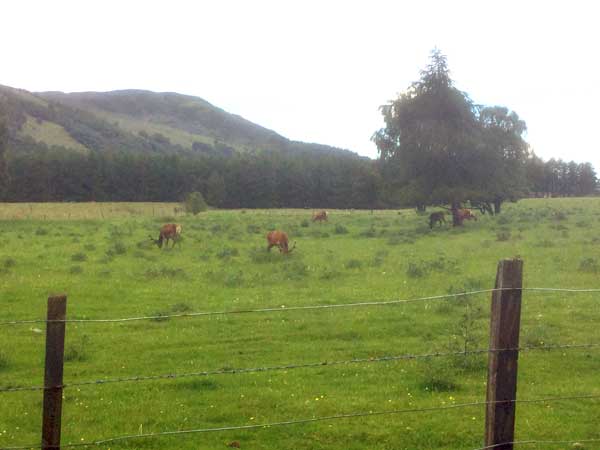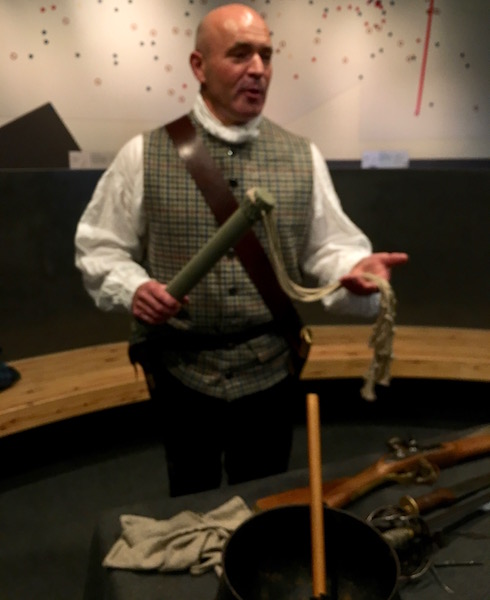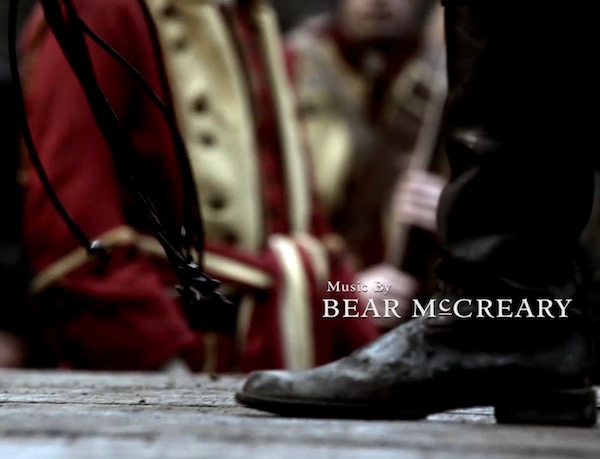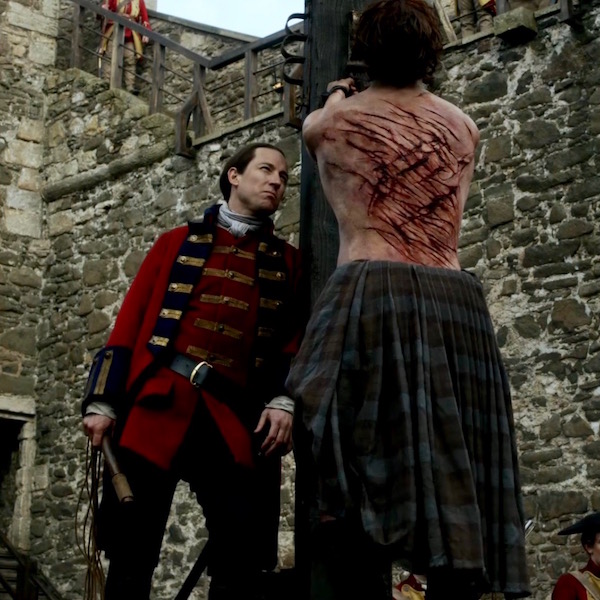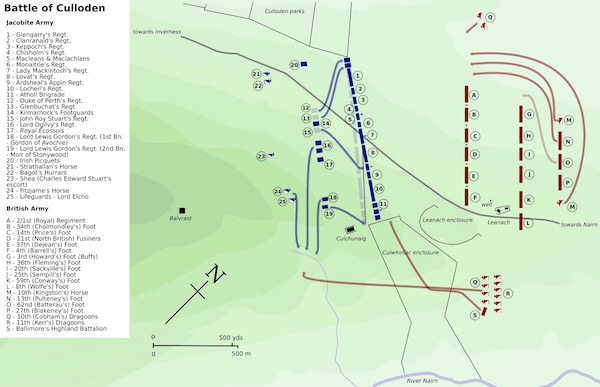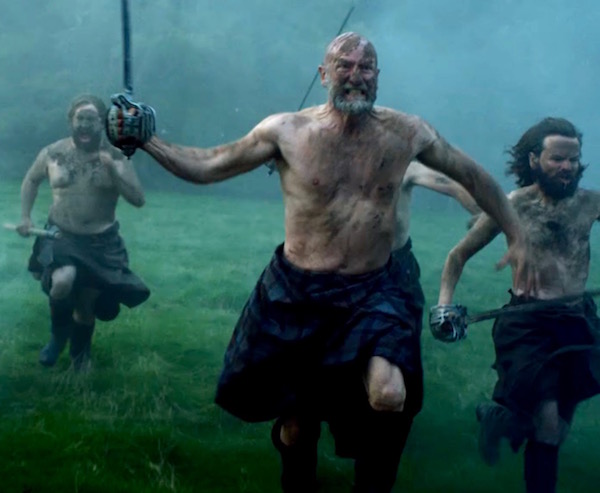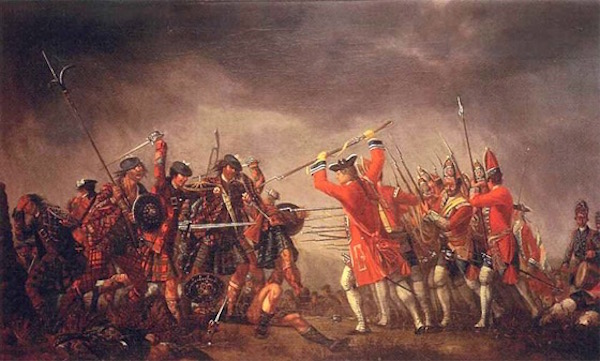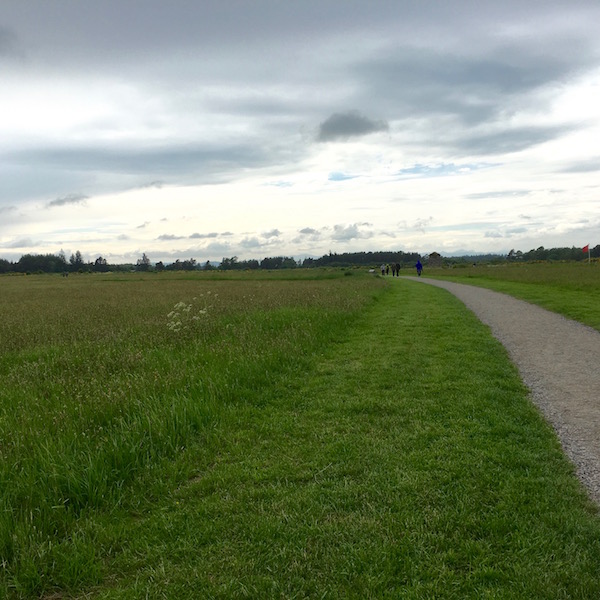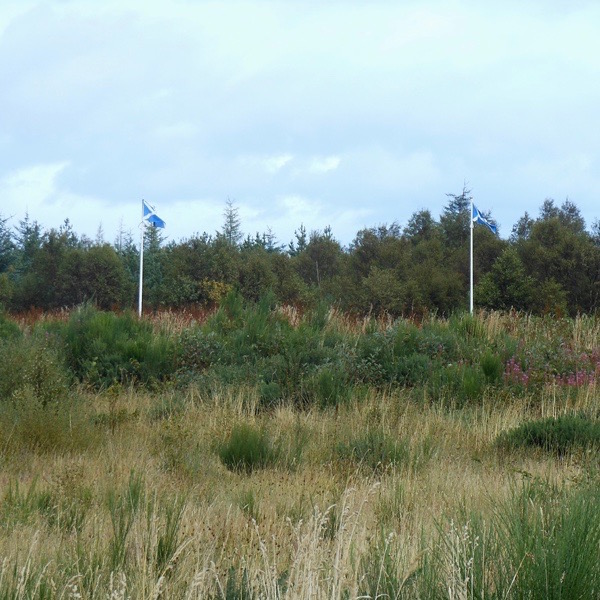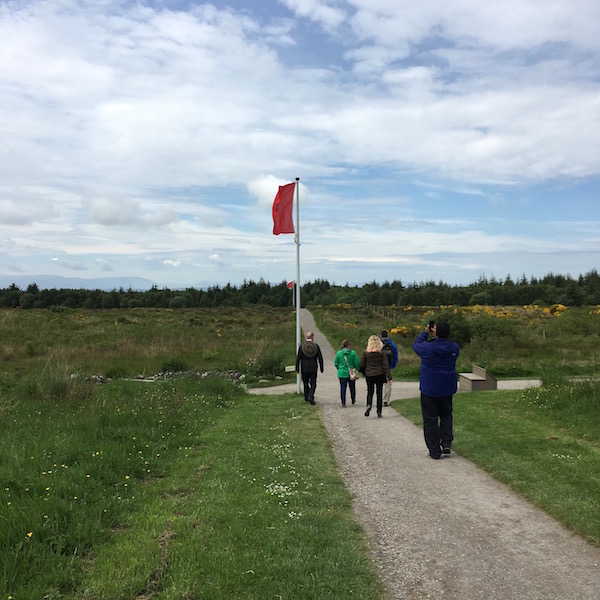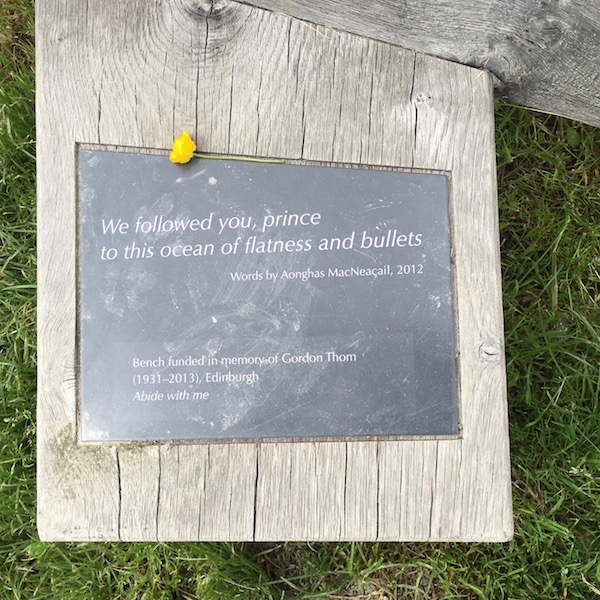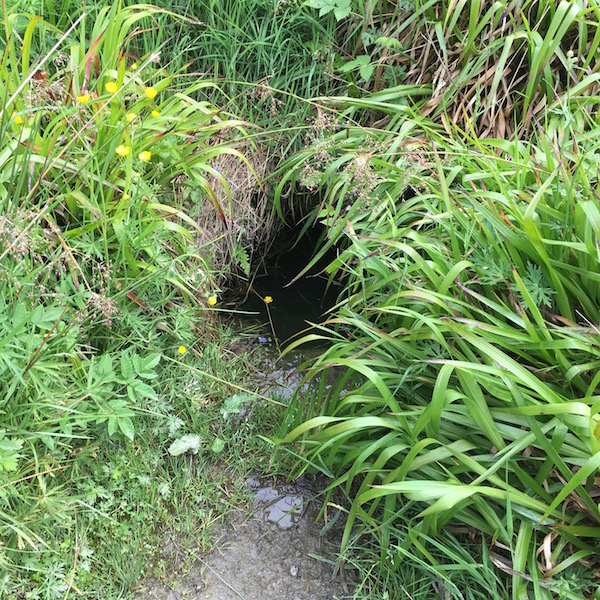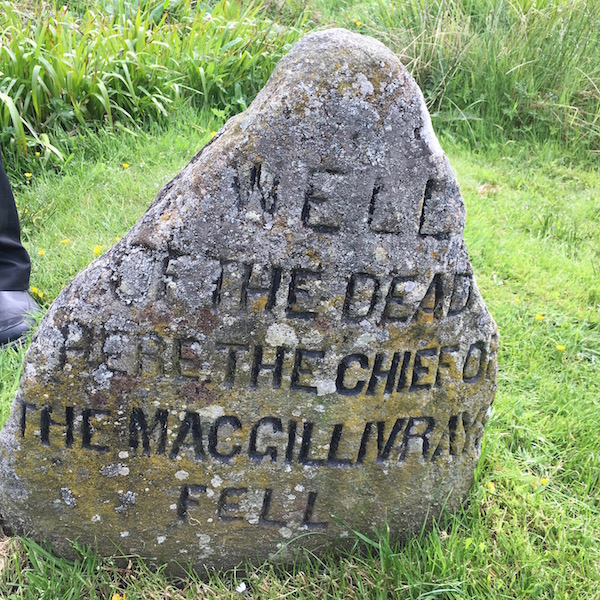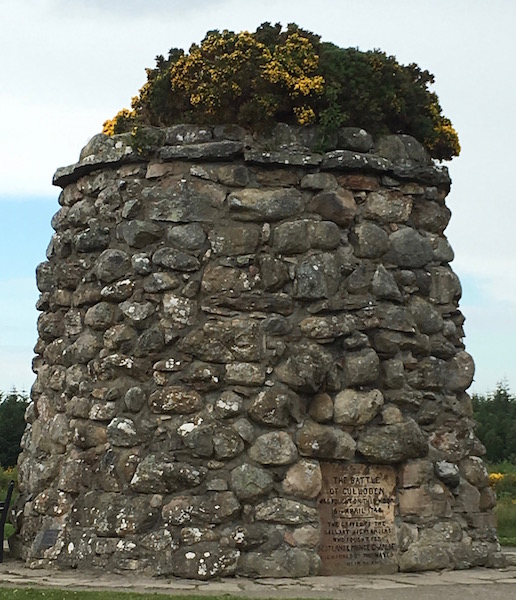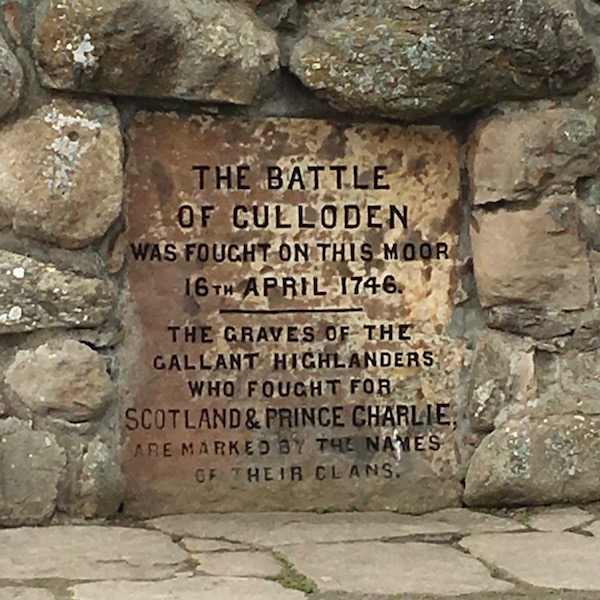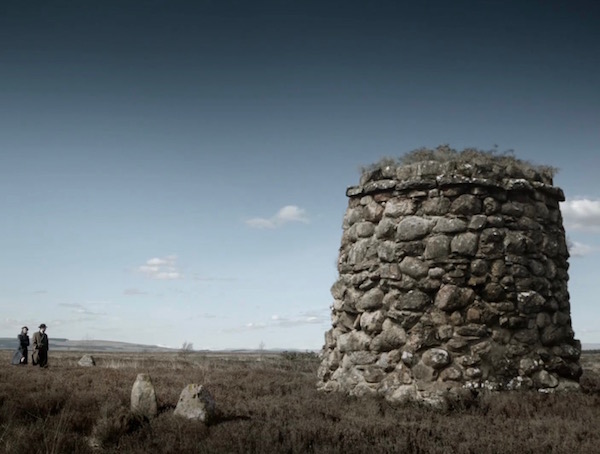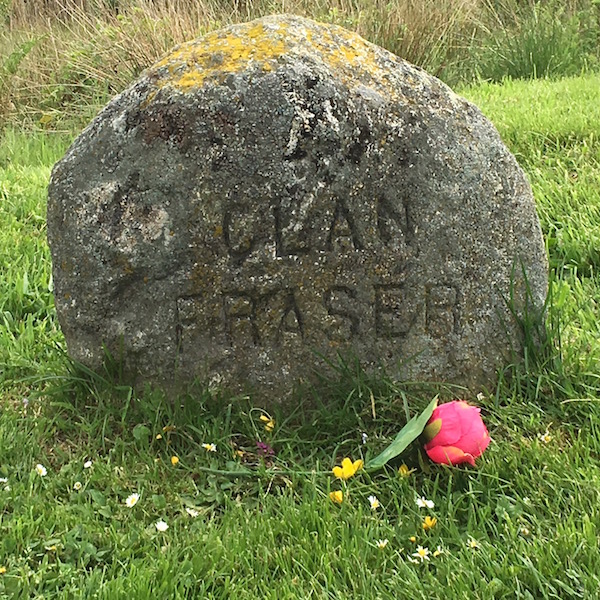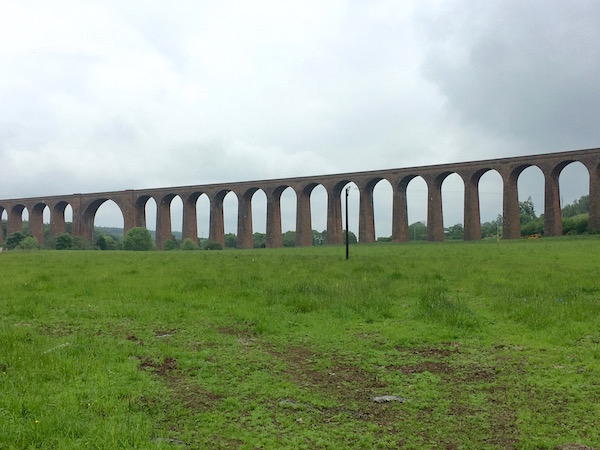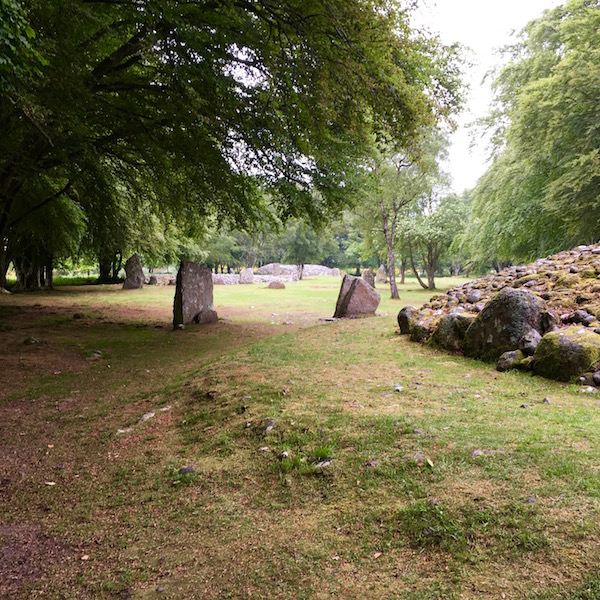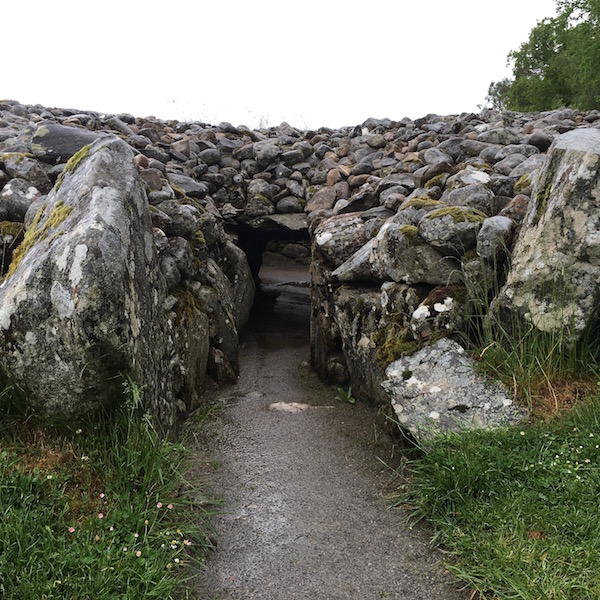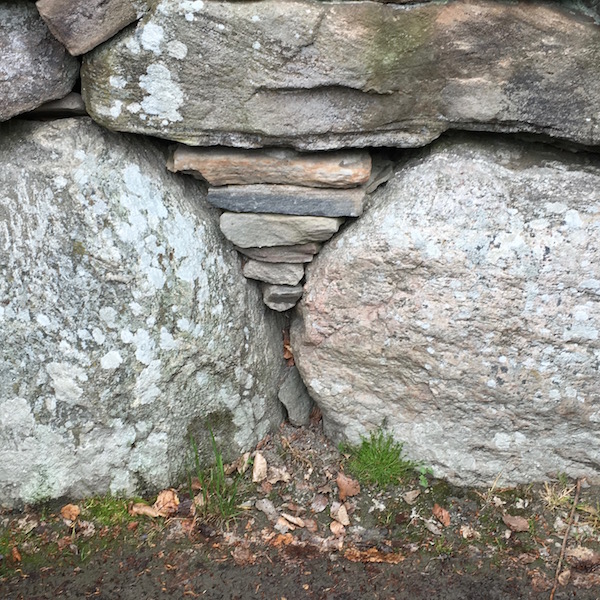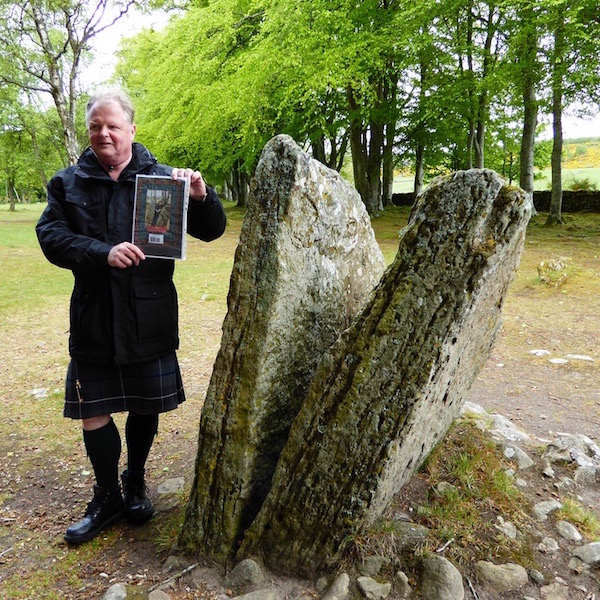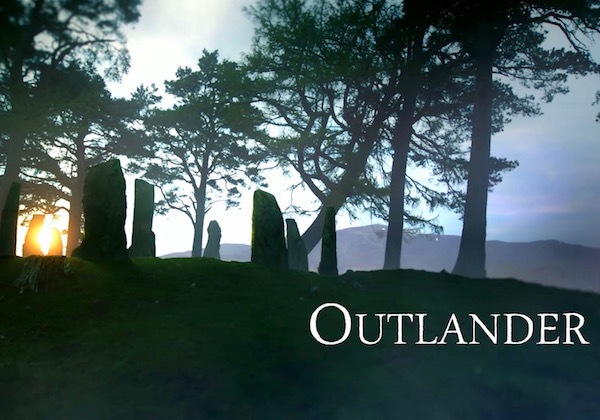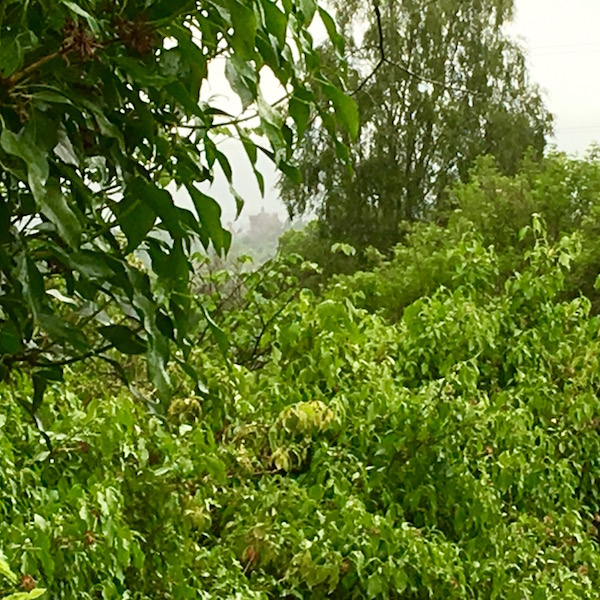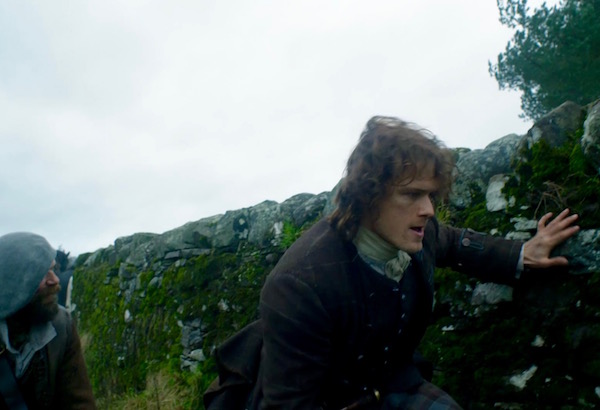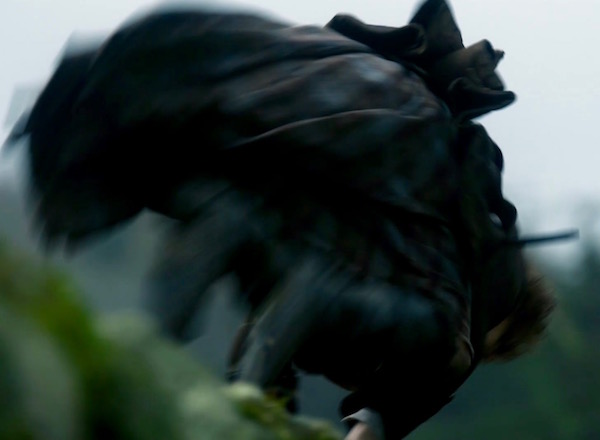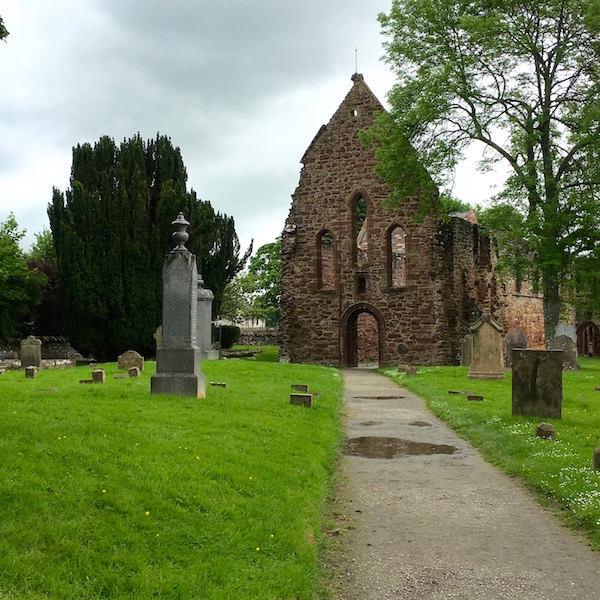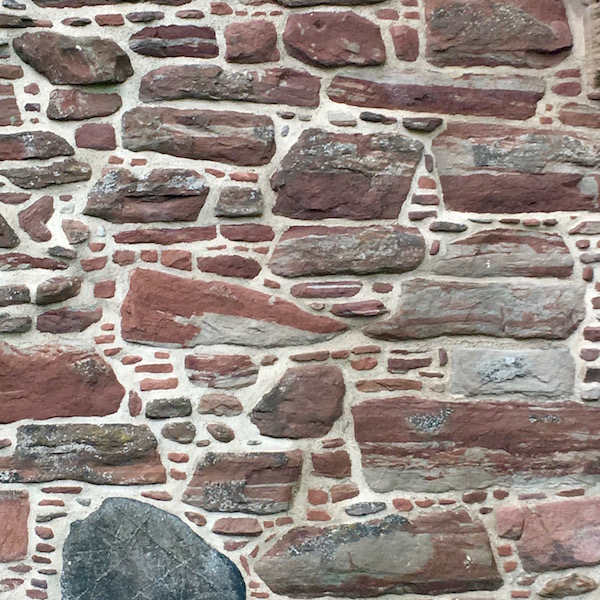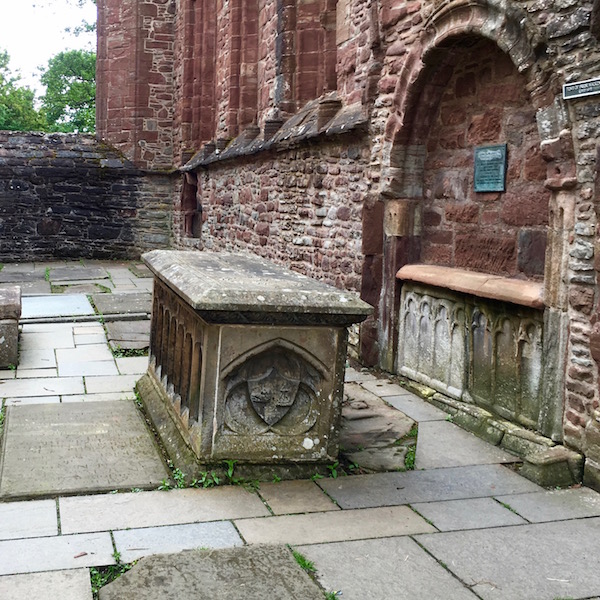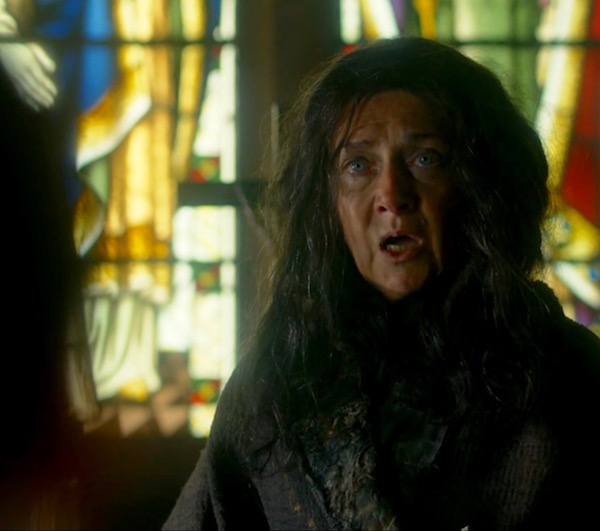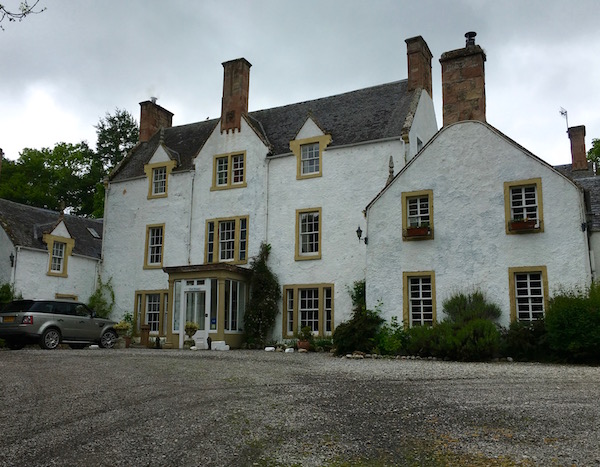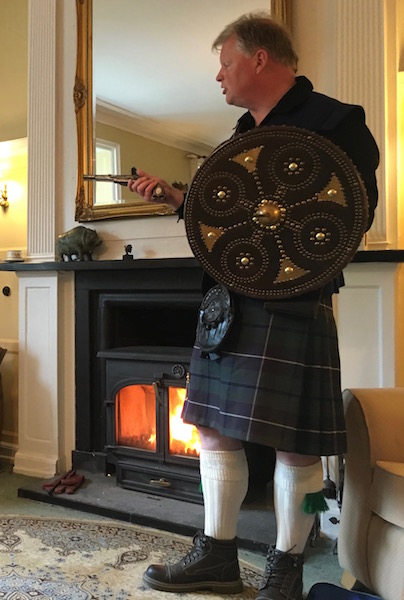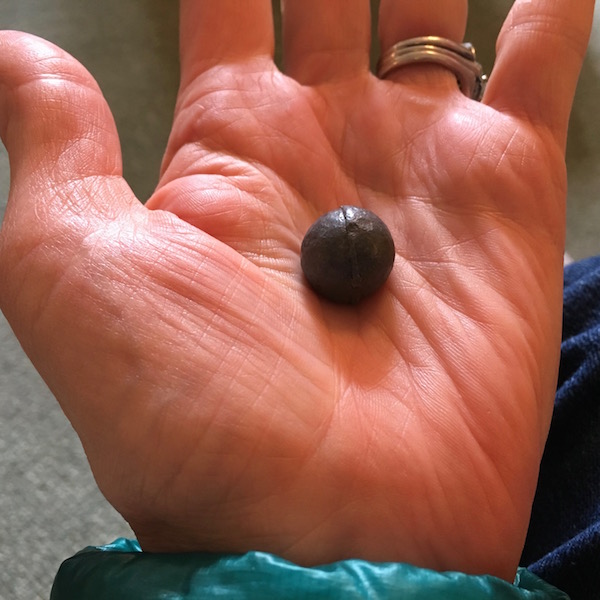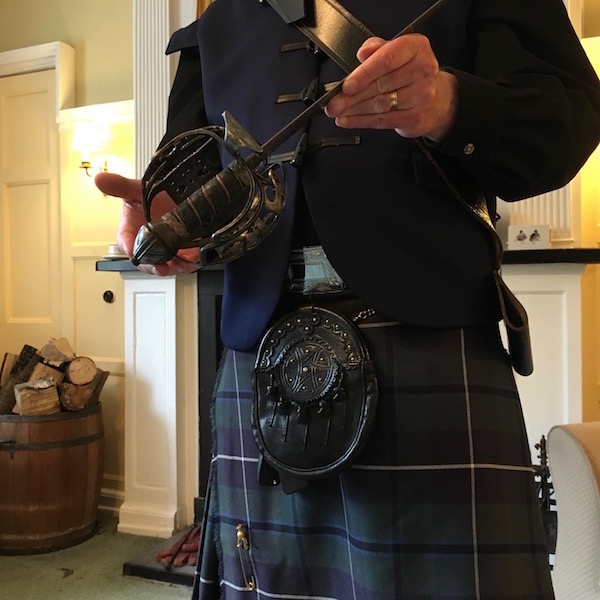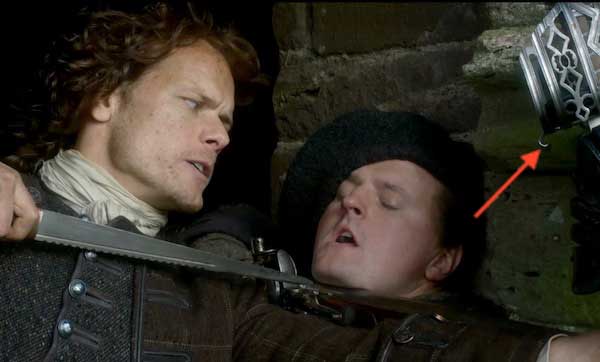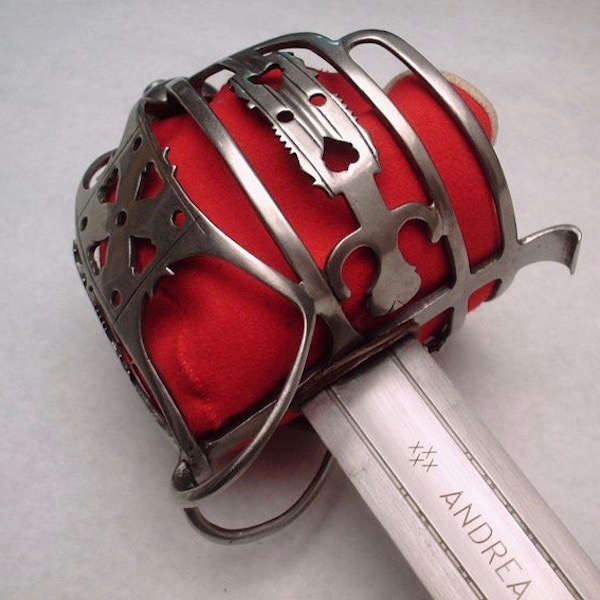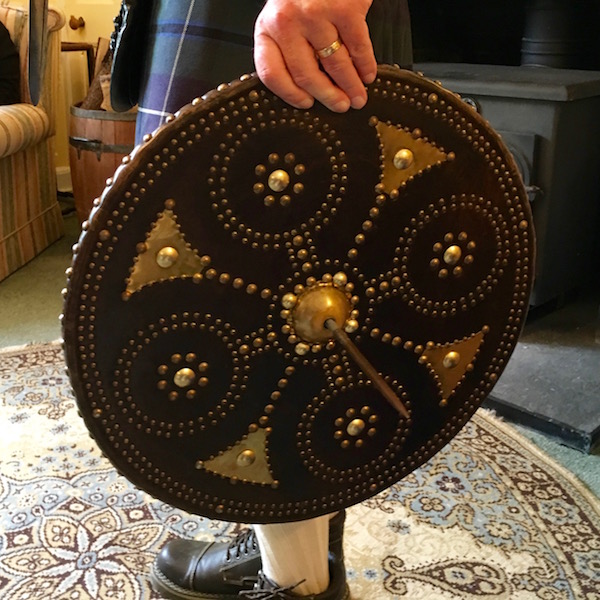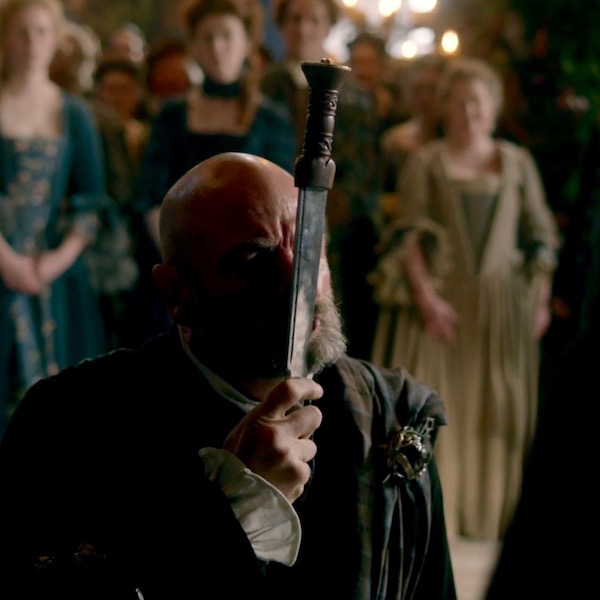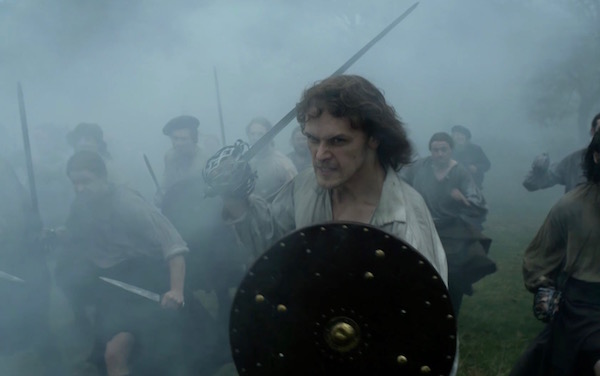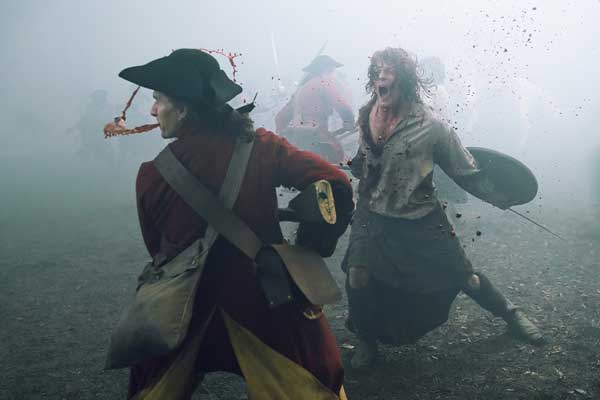Greetings, all! This post marks the fourth and final installment of my 2016 Scotland tour. Six days of sights and sites in Highlands and Lowlands. Be sure to catch Part 1, Part 2 and Part 3! I Hope you enjoy. Diving right in – pike position! <G>
The next three nights we lodged at Inverness, a bustling city of almost 50,000. Inverness, meaning “mouth of the river Ness”, is bisected by the River Ness which drains from Loch Ness, a mess o’ nesses! We took a series of day trips from our new home base.
Next day was a misty moisty morning in the Highlands. Rain jackets on! We drove along the shores of Loch Ness, a truly massive body of fresh water! Our first stop was Urquhart Castle (Photo A). Built in the 13th to 16th centuries on an earlier fortification site, it was partially destroyed in 1692 to prevent its use in early Jacobites risings. Hauntingly beautiful!
BOOK QUOTE: Urquhart Castle and Loch Ness are one of many Scottish sites and sights that Diana includes in her writings (Outlander book). Frank and Claire on their second honeymoon spend a day on Loch Ness, sighting Urquhart Castle. Their guide comments:
“Yonder, that’s Urquhart Castle.” He pointed to a smooth-faced wall of stone, barely visible through the trees. “Or what’s left of it. ’Twas cursed by the witches of the Glen, and saw one unhappiness after another.”
Several readers have asked about Scotch broom versus scotch gorse as both bear similar vivid golden flowers. Scotch broom with flowers following spiky branches lies in the foreground of Photo A. Gorse flowers are gathered into rounded clumps such as those in the distance.
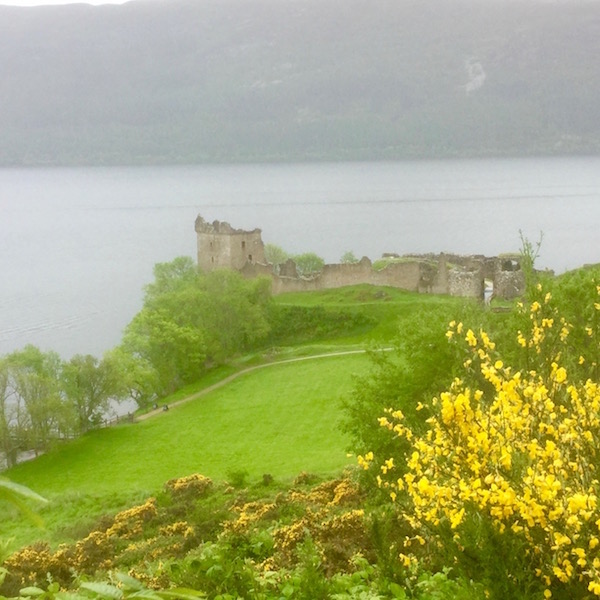
Photo A
Did we see the resident Nessie in the Loch Ness? Well, I didn’t, but it would be easy to image one as the water’s surface is riddled with light, shadow and waves. Hey, maybe the dark line behind the castle is the wake of the water creature (Photo B)? Maybe. Who can say? Not surprisingly, Claire can say!
BOOK SPOILER: Warning! The next quote from Outlander book, will be a spoiler for those who truly eschew reading Diana’s written word!
A great flat head broke the surface not ten feet away. I could see the water purling away from keeled scales that ran in a crest down the sinuous neck. The water was agitated for some considerable distance, and I caught a glimpse here and there of dark and massive movement beneath the surface of the loch, though the head itself stayed relatively still… The sleek skin was a smooth, deep blue, with a vivid slash of green shining with brilliant iridescence beneath the jaw. And the strange, pupilless eyes were a deep and glowing amber. So very beautiful.
…Valved nostrils opened suddenly with a startling hiss of breath; a moment of suspended motion, and the creature sank again, a churning roil of waters the only testimony to its passage.
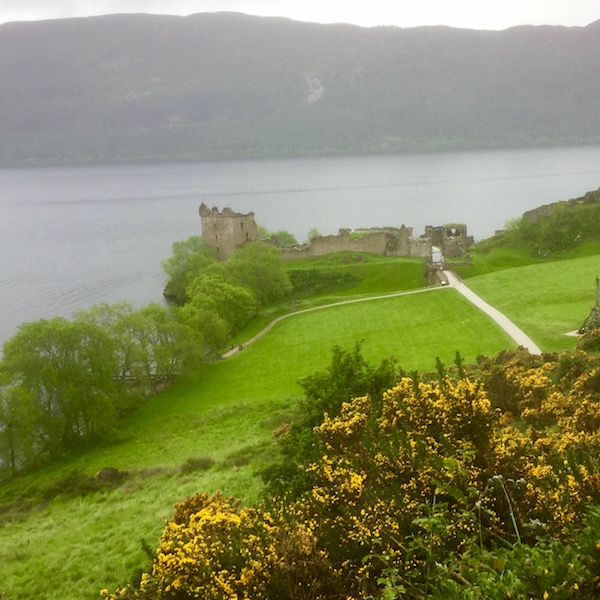
Photo B
The surrounding hillsides were alive with small frothy rivulets cascading down the wooded slopes (Photo C). I loved these wee, charming burns! Very much like my home turf.
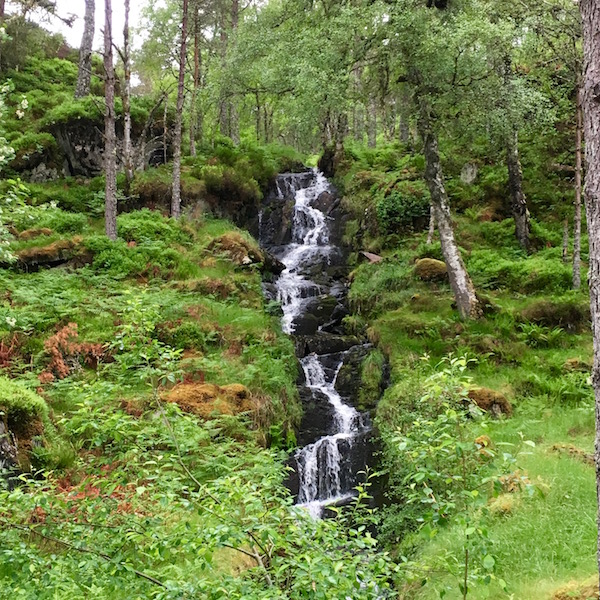
Photo C
Taking a break at a roadside rest stop, I bought carrots to feed Highland coos! They were very docile but eager for the treats (Photo D).
Thankfully, only here did we encountered the dreaded Scottish midges, a species of small flies abundant in wet areas. Gathering in clouds, they bite cattle, sheep, deer and humans for bloodsport. Literally!
Likely drawn by the cattle and mushy ground, they quickly descended! Hugh called for us to hop in the van. I made it out of the insect cloud with only three ankle bites: one, two, three…all in a row. We spent the next few miles slapping them between our hands as these biting groupies followed us into the van! Yes, we had the prescribed liquids to fend them off, but none of us had used them because the need hadn’t yet arisen. Too late! scritch…scratch…
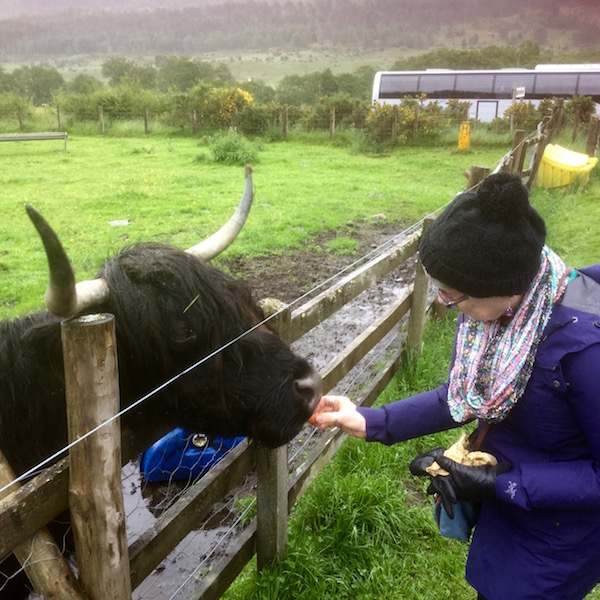
Photo D
Next, we drove into Glen Moriston, a river glen between Loch Ness and Loch Cluanie. We soon stopped at a small memorial cairn. Small road and small cairn, it could easily have been missed had we not been with Hugh, our master storyteller and guide! The marker records a poignant story.
In the weeks and months following Culloden, some 1,000 more Jacobites were relentlessly pursued and killed by Loyalist troops. Prince Charles wandered Scotland for five months following the disaster before escaping to France.
The memorial cairn memorializes the spot where, in July 1746, Roderick MacKenzie revealed himself to Redcoat soldiers. An officer of Prince Charles’ army, Roderick was of similar size and countenance to his Prince. He drew his sword attracting the soldier’s fire. As he fell, mortally wounded, he cried out, “You have murdered your Prince!” Hoping they had killed Charles, soldiers removed Roderick’s head for identification. Roderick thus gave his own life to buy precious time for Charles Stuart’s escape.
Roderick’s body was secretly buried on the banks of a burn near the River Moriston (Photo E). The burn is now known as Caochan a’ Cheannaich, “Stream of the Merchant”.
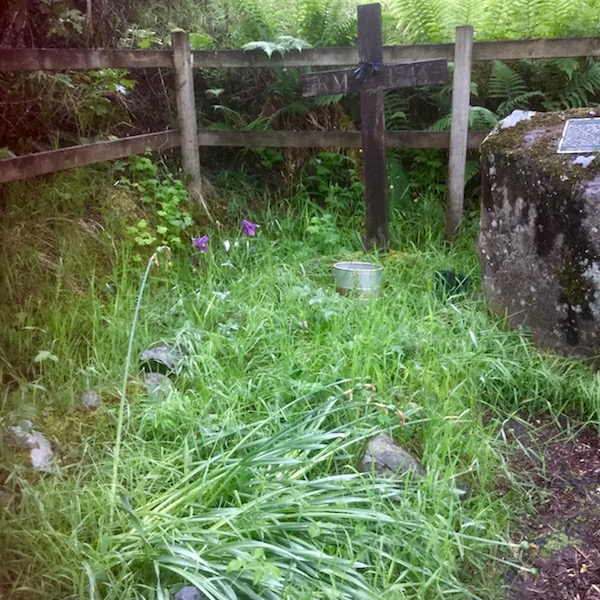
Photo E
A stone marker honors Roderick’s sacrifice. Each July, members of the 1745 Association and the Clan MacKenzie Society remember their brave kinsman who gave his life in hopes of aiding his prince’s escape (Photo F). Tulach ard, Roderick!

Photo F
As we neared Scotland’s west coast, we arrived at remnants of a beautiful stone chapel, purportedly Diana’s inspiration for the Church of St. Kilda (Photo G). Hauntingly (no pun intended) beautiful, roof missing, ferns growing from stone walls, it was a lovely and peaceful place.
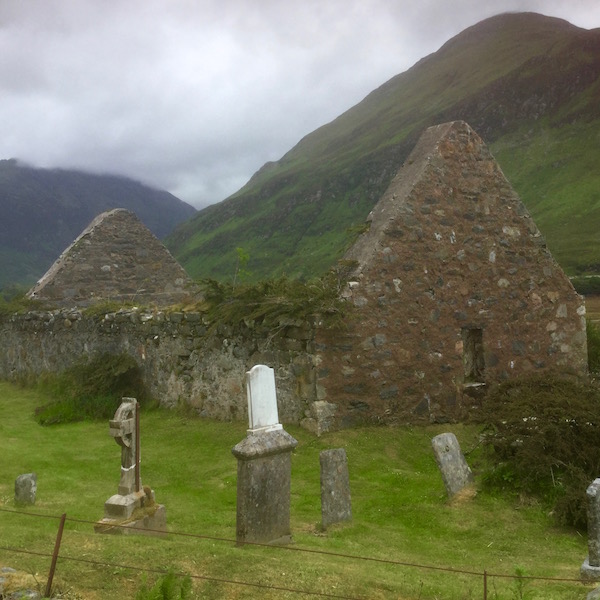
Photo G
BOOK SPOILER: Warning! The next quote is also a spoiler – a BIG one – so skip if you have yet to read Dragonfly in Amber!
St. Kilda is an ancient kirk where Claire, Roger and Bree come upon the grave of BJR! It is also the site where Claire finds an unexpected stone slab.
The kirkyard of St. Kilda lay quiet in the sun… “Jonathan Wolverton Randall,” she said softly, “1705–1746. I told you, didn’t I? You bastard, I told you!”
Claire’s fingers brushed his own away, and touched the stone, caressing, as though touching flesh, gently tracing the letters, the grooves worn shallow, but still clear. “ ‘ JAMES ALEXANDER MALCOLM MACKENZIE FRASER ,’ ” she read aloud. “Yes, I know him.” Her hand dropped lower, brushing back the grass that grew thickly about the stone, obscuring the line of smaller letters at its base. “ ‘Beloved husband of Claire,’ ” she read. “Yes, I knew him,” she said again, so softly Roger could scarcely hear her. “I’m Claire. He was my husband.” She looked up then, into the face of her daughter, white and shocked above her. “And your father,” she said.
Back to present day, the kirkyard was sprinkled with evocative and poignant headstones (Photo H). Understandable that it served as inspiration for St. Kilda.
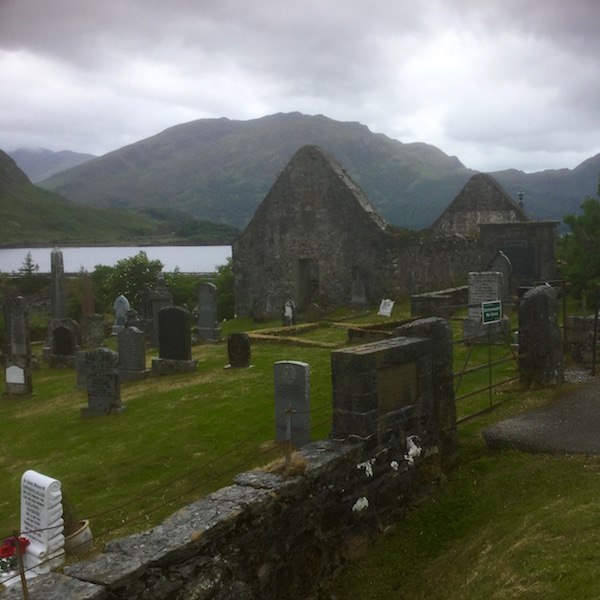
Photo H
A few days ago, Diana posted a link to an article about ancient brochs titled “Campaign Launched to Help Archaeologists Search for an Iron-Age Broch.”
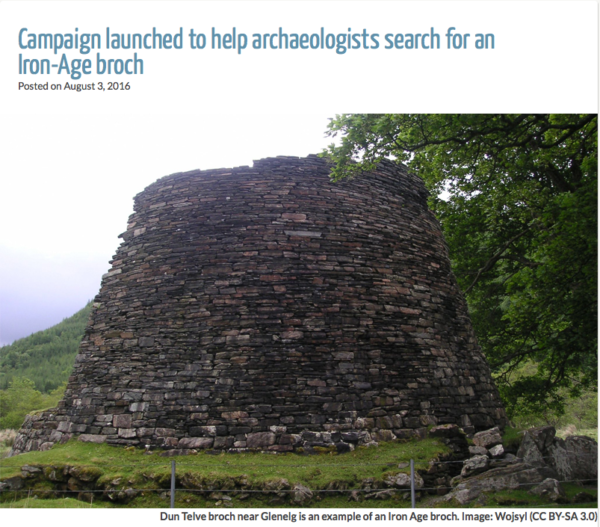
Serendipity! This article was timely, as our next stop was Dun Telve, remains of a genuine ancient broch near the village of Glenelg. This broch appears as the first photo of the above article. You can see that the gloomy day made for poor photography (photo I).
Dun Telve is more massive than either photo suggests; it is a double-walled, cone-shaped tower reaching 10 m (33 ft) in height, a base diameter of 18 m (60 ft) and base walls 4.3 m (14 ft) thick! The intact structure supported several floors and was topped with a wooden beamed crown. Now, only part of the wall remains. The site has not been professionally excavated but in 1914, coarse pottery, stone tools and lamps were retrieved from the site.
BOOK QUOTE: Remember, the Frasers of Broch Taurach enjoy their own stony tower (Outlander book)?
Broch Tuarach means “the north-facing tower.” From the side of the mountain above, the broch that gave the small estate its name was no more than another mound of rocks, much like those that lay at the foot of the hills we had been traveling through.
The old stone broch, situated on a small rise to the rear of the house, rose sixty feet above the ground, cone-topped like a witch’s hat, girdled with three rows of tiny arrow-slits…
Jamie explains the logic of its name to Claire:
“It has a door,” Jamie said reasonably. “The door faces north.” “All right,” I said, stepping carefully over a tiny runnel of water that crossed the deer path. “Good enough. What about ‘Lallybroch,’ though? Why is it a lazy tower?” “It leans a bit,” Jamie replied.
Great humor, Diana!
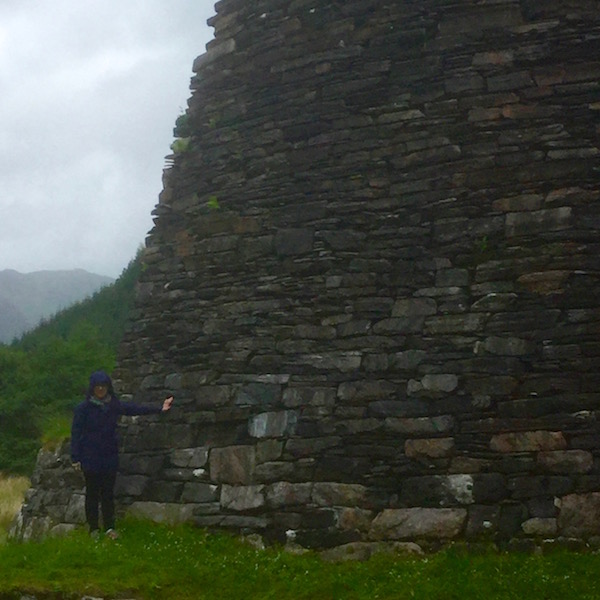
Photo I
Brochs are a type of Iron Age drystone double-walled structure found only in Scotland. They were built between 100 BCE and 100 AD, during the time of the Roman invasion of Britain. There are over 500 known broch sites in Scotland most in the Highlands and islands. Their purpose remains speculative. Theories include forts, farmhouses, stately homes, lookout towers or castles. The double-walls enclosing a hollow interior are clearly visible in Photo J.
Access up the tower is via a winding stone stairway between the walls. Part of this amazing edifice, assembled without mortar, still stands after some 2,000 years! Our modern brick homes would not fare so well.
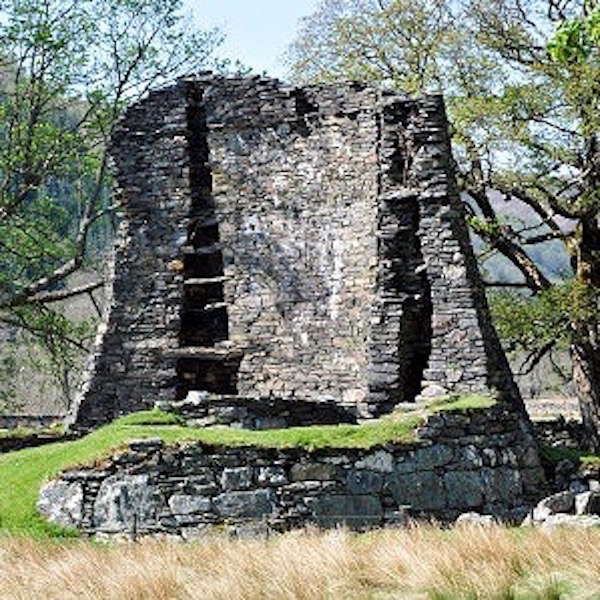
Photo J
After marrying the Laird of Lallybroch, Claire became Lady Broch Tuarach. She tartly reminds Jamie of her elevated position in no uncertain terms (Starz episode 211, Vengeance is Mine)!
“Am I not the Lady Broch Tuarach? Are not these men my responsibility, too?”
So there, Laird Jamie! These broch lasses are fierce females!
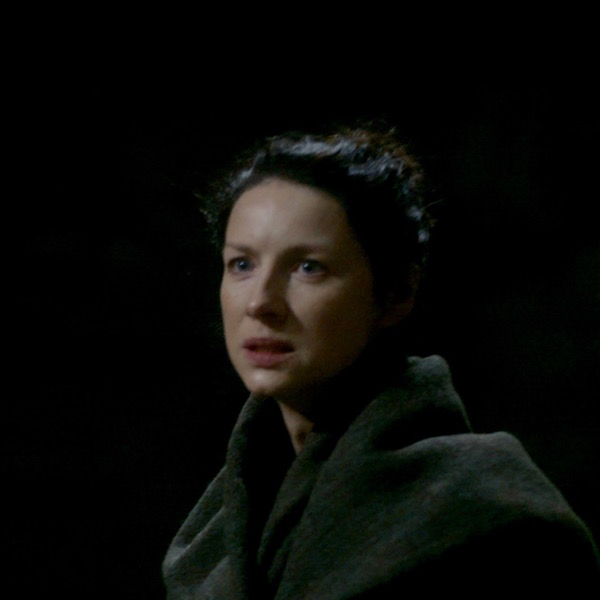
Our next stop was Glenachulish, the last manually operated turntable ferry in Scotland (Photo K). Rather than turn the ferry around at each shore, the ferry deck is rotated 180º for loading and unloading. Vera clever the Scots!
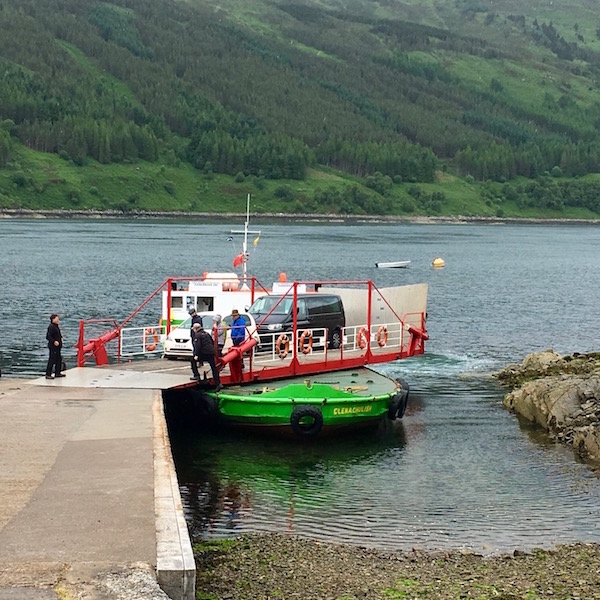
Photo K
Where does the ferry go? Between the village of Glenelg and the mystical Isle of Skye! She crosses at Kyhlerhea Straits, the closest point between the mainland and the Isle. This site has been a crossing point for hundreds of years; well before the time of these fairies… oops, ferries! Here is a cool video showing the ferry passage:
People come from all over the world to Glenachulish: they marry on it, ride it and watch seals, herons, otters and sea-eagles from its deck. Our crossing was swift and smooth. That is Skye looming in our sights (Photo L). The Isle is an amalgam of green trees, heather, grasses and bushes; its peaks shrouded in mist.
We enjoyed lunch and delicious ale at a local pub but couldn’t spend much time on Skye. Must return for a future visit. It did feel wonderfully magical but I didn’t see any fairies said to inhabit the island!
Reminded me of the lyrics from the Skye Boat Song:
Sing me a song of a lass that is gone
Say, could that lass be I?
Merry of soul she sailed on a dais
Over the sea to Skye……..
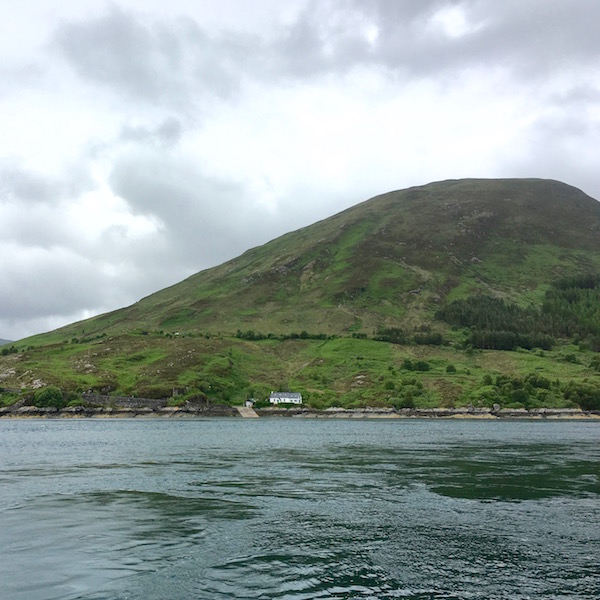
Photo L
Next day, we visited the beautiful village of Culross, featuring quaint homes, Culross Abbey and a monastery ruins. Beautiful cobblestone roadways wind their way between tile-roofed homes. Each roadway was cleverly crowned with a line of larger flat stones to aid with water drainage (Photo M). Culross’ claim to fame? It was stand in for Outlander’s Crainsmuir village!
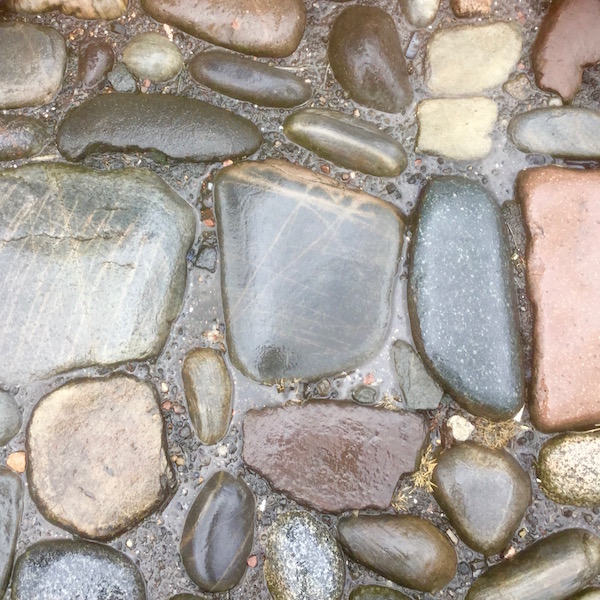
Photo M
Walking to the town square, we recognized the plaza as the site where the locksman thug nailed the tanner boy’s lug to the pillory for theft (Photo N). Aye, this is the place!
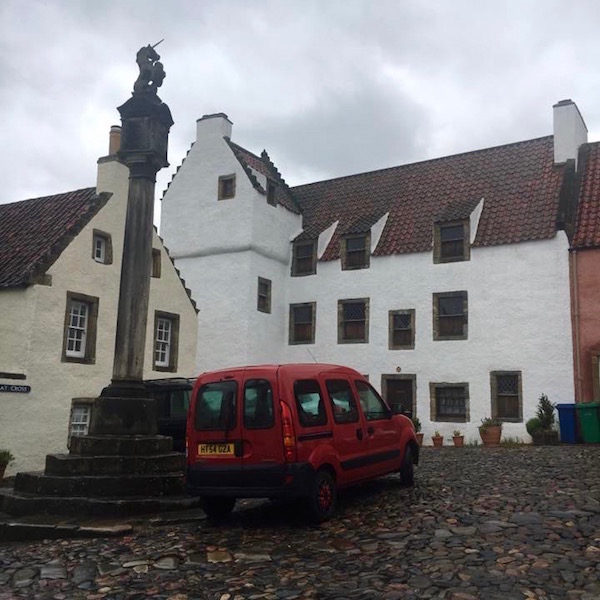
Photo N (Photo by Johnathan Giacalone)
One and the same – check! You can just make out the unicorn horn topping the monument (Starz episode 103, The Way Out). Different camera angle, same spot!
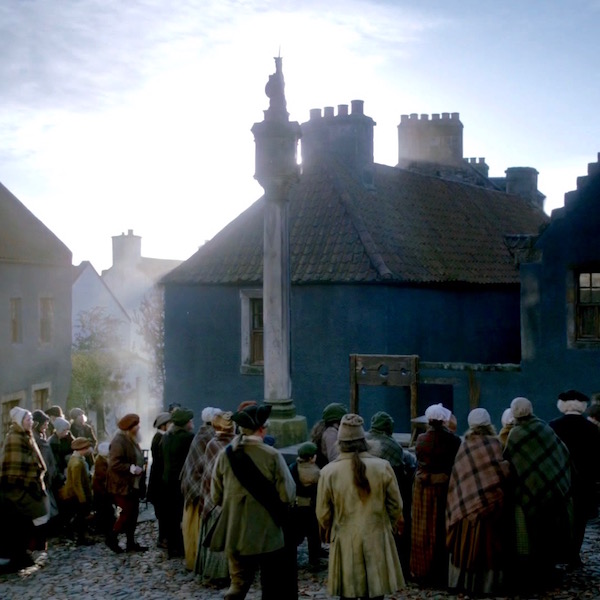
And check out these beautiful renditions by Wil Freeborn, a Scottish painter and illustrator. He does amazing paintings of locations from today’s perspective and the Outlander view. You can find Wil and Outlander Anatomy on Instagram! This picturesque spot is certainly recognizable!
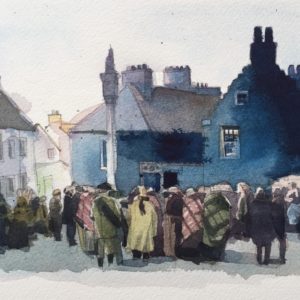
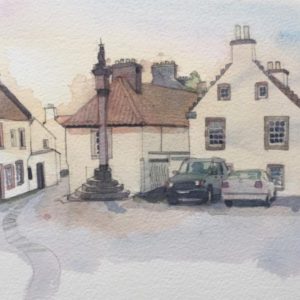
Returning to the present, a white house looms in the background of Photo N and foreground of Photo O; do you recognize it? This is home of the witch, Geillis Duncan, albeit the exterior is a different color than in the above episode (Photo O). The word is Outlander crews painted homes around the village square varying shades of blue for filming episodes 103, The Way Out, and 211, The Devil’s Mark, and then returned to their original hue (white) once filming was completed. Paintin’ the town? Hah!
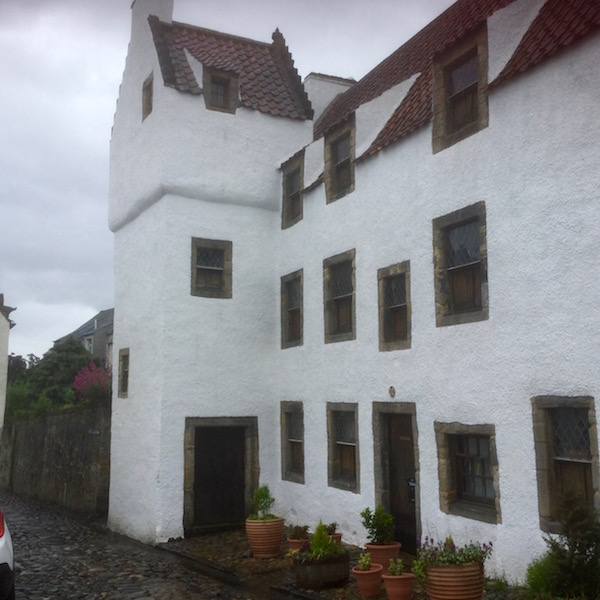
Photo O
Shifting the photo angle about 60º to the left, Geillis’ home lies in the background of this scene (Starz, episode 103 The Way Out) – Jamie nimbly hops from the pillory after freeing the nailed ear (Anatomy Lesson # 24, “Hear, Here – The Ear”). He has strong fingers, ye ken? Painted blue, of course – uh, the house, not his fingers (Anatomy Lesson #22, “Jamie’s Hand – Symbol of Sacrifice”).
Various other Culross sites were filmed for S.2. Examples: Claire pulls a woman’s tooth and Jamie swears his oath to Prince Charles (Starz episode 211, Vengence is Mine) at another site in the town.
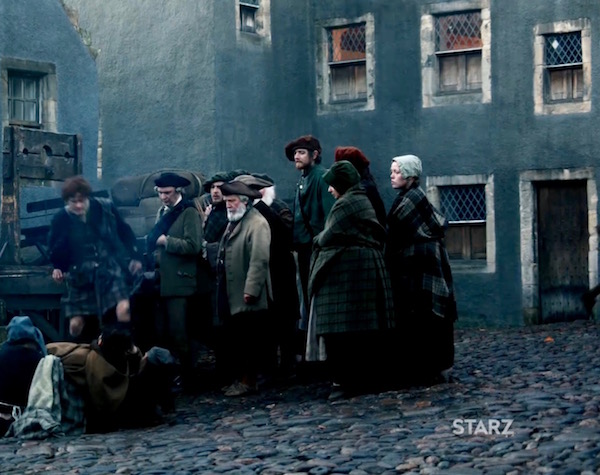
We lunched at The Red Lion, a delight Culross pub. I loved its ceilings, painted with clever cartoons featuring TinTin, his dog Snowy and Popeye (Photo P).
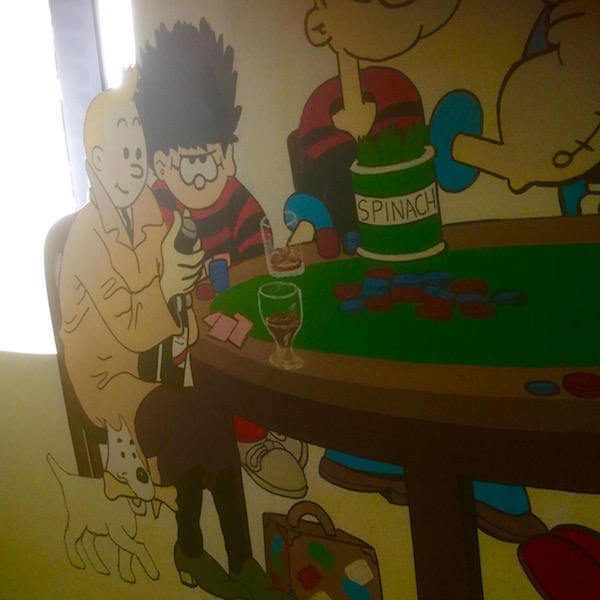
Photo P
But, my personal favorite greeted me on the inside door of the ladies’ loo. Peer closely….this lad was vera pleased to meet any lass visiting his stall (Photo Q). Bwahahahaha!
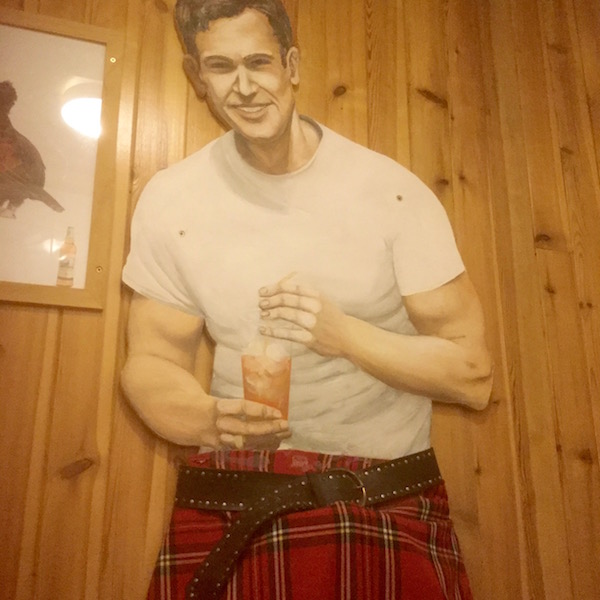
Photo Q
The day ended at Blackness Castle, the site used to film Outlander’s infamous Fort William scenes! Blackness Castle is a grim and forbidding 15th century fortress built on a rocky spit of land jutting into the Firth of Forth. The fortress was bleak but I was delighted to see the amazing Firth because one of my ancestors hails from this region of Scotland!
From an ariel view, Blackness Castle is oriented in a north-south direction and looks very much like a ship stranded on a rocky shore. With its prow facing us (Photo R), it is described as “the ship that never sailed.” Enlarging on the ship theme, it includes three towers: stem (front), mast (center) and stern (back).
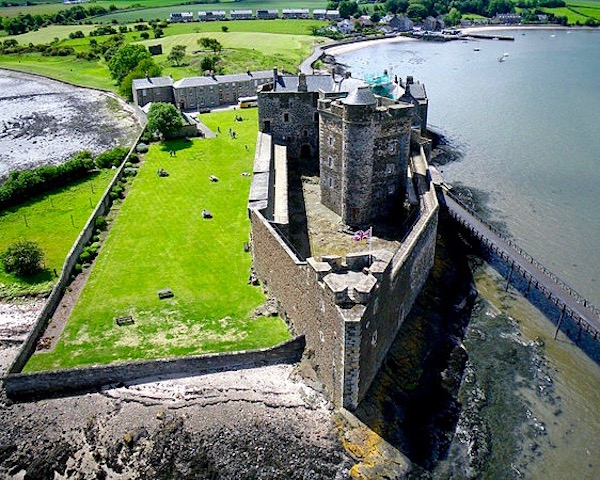
Photo R
Stepping within those thick stone walls reveals a rocky inner courtyard which remains harsh and difficult to negotiate even after 600 years of wear and tear (Photo S)!
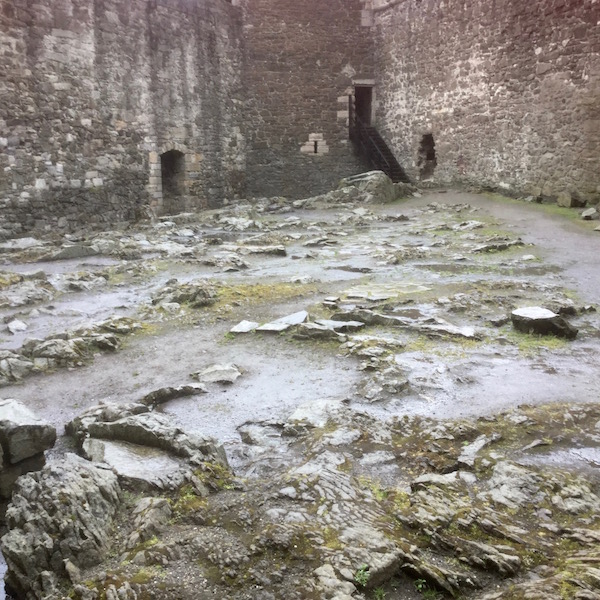
Photo S
Different photo angle, but Roger and Bree carefully trod this rocky surface as they visit “Fort William” (Starz episode 213, Dragonfly in Amber). The stem or north tower rises in the background, behind the whipping post.
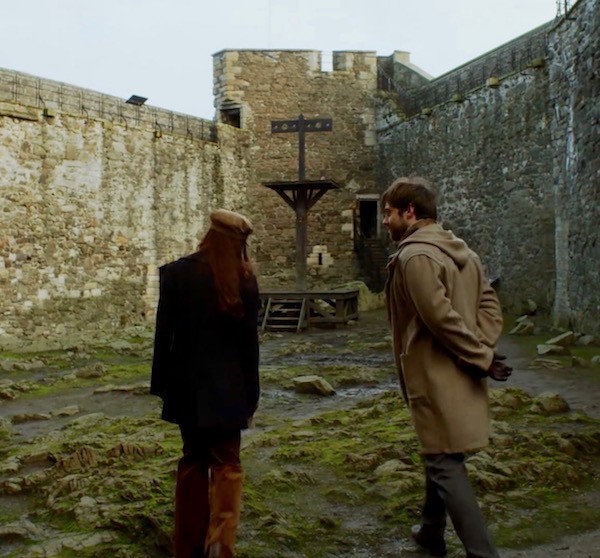
Roger’s history lesson on Fort brutality disturbes Bree so much she wants out of there, pronto (Starz episode 213, Dragonfly in Amber). Away they go!
Undoubtedly Bree sensed connection with her real father as Jamie was tied to that whipping post and flogged like an animal.
BOOK QUOTE: Jamie explains to Claire after he rescues her from Fort William (Outlander book) and hands of the evil one:
“Well, I was tied to that post, tied like an animal, and whipped ’til my blood ran! I’ll carry the scars from it ’til I die.
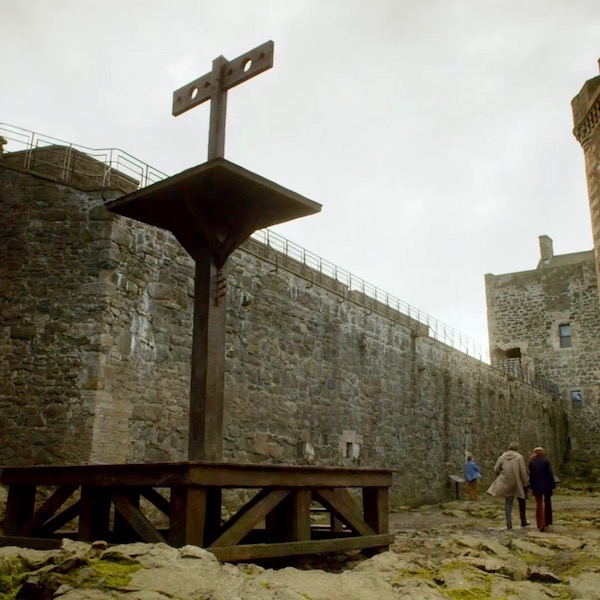
Even after watching many times, this realistic, gut-wrenching scene still curdles my wame and apparently, was difficult for an experienced film crew (Starz episode 106, The Garrison Commander)! Ira Steven Behr, former Outlander writer, explains (The Hollywood Reporter, May 16, 2015):
I know how this is probably going to look in print, but the fact is the five or six days we shot were without a doubt the most uncomfortable and worst I’ve ever spent on a set. Most crews on TV shows and film are very matter-of-fact, tough hombres. And they do that job no matter what’s being filmed. This time, though, everyone was feeling it. The guys would walk past me and go, “When is this going to end?” I’ve never had that happen before.
Explaining the orientation of this scene – Blackness’ central or mast tower lies back-right, behind two women in white(ish) aprons.
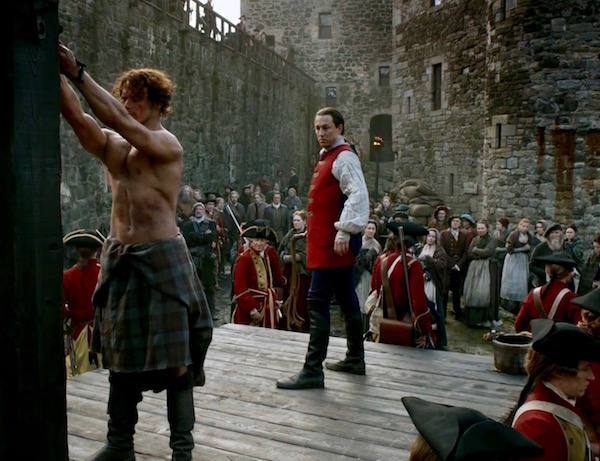
Back to reality … moving to the stem (north) tower… it’s lower floor is set with a metal grid covering a pit or water prison (Photo T). Prisoners who annoyed the guards were thrown into the pit. Its only benefit was running water: twice a day at high tide! Firth water flowed in on helpless prisoners who had no choice but to bear the freezing water until the tide receded. Hypothermia (Anatomy Lesson #36 Outlander Owies – Part Deux!)…. it boggles the mind!
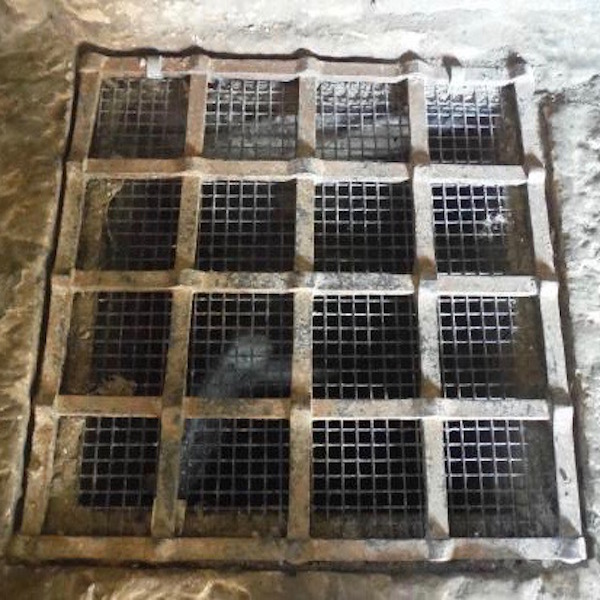
Photo T
A pubic wall walk tops the fortress’ walls, granting stunning views of the Firth and grim interior of the courtyard (Photo U). Once again, check out the round mast/central tower. It contains a stone spiral staircase allowing access to all five floors of the square building behind it. We climbed them. Huff ‘n puff.
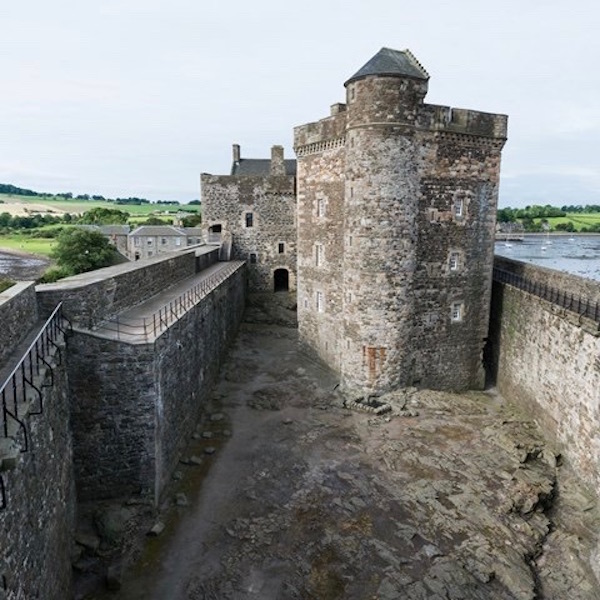
Photo U
Remember during Starz episode 109, The Reckoning, Jamie judiciously cold-cocks BJR for assaulting his wife? He then hustles Claire down a stone spiral staircase, their flight halted by Redcoats on the landing below. Then they escape to the wall walk and execute a leap o’ faith into the sea! Mayhap, the mast tower’s spiral staircase was used for this scene?
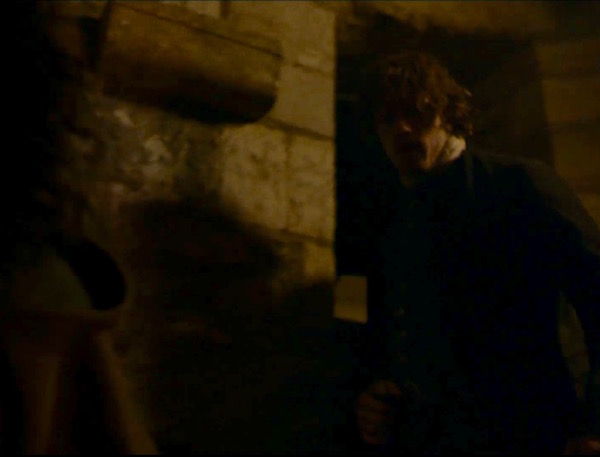
I hope you take time to watch an ariel sweep of the massive Firth of Forth, thus ending our visit to the forbidding Blackness Castle, er, Fort William!
The last day of the tour took us to Edinburgh, Capitol of Scotland. Edinburgh ties into Outlander because Prince Charles Edward Stuart and his troops were based in the city for several months.
BOOK QUOTE: Diana explains in Outlander book:
With the Camerons, the various MacDonalds, and the others so far committed, the Jacobite army numbered barely two thousand men, and those the most ill-assorted lot of ragtag and draggletail that any general had ever been lumbered with. And yet, that ragged-arsed lot had taken the city of Edinburgh, routed a greatly superior English force at Preston, and showed every disposition to continue going through the countryside like a dose of salts.
Our entire tour group agreed to walk the Royal Mile attired in 18th century garb (Photo V) provided by a theater supply company. We had a blast!
Psst…Wearing an 18th century-style corset was comfortable and it improved my posture. That hip roll, though … one false step sent me careening off into people, places and things!
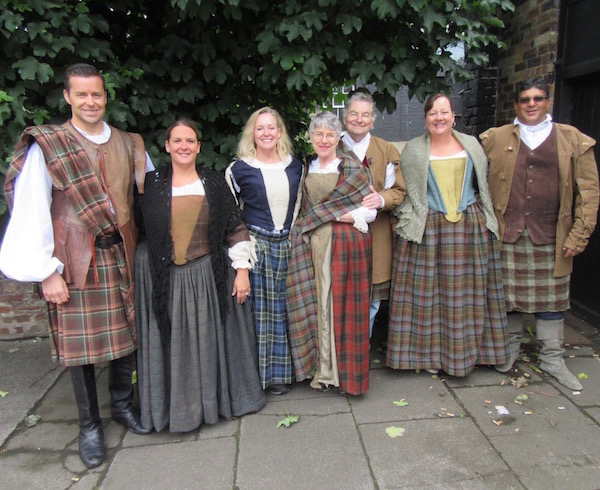
Photo V
The Royal Mile slopes at a fairly steep grade between beautiful Highland Tolbooth St John’s Church (Photo W) near the top and Holyrood Castle at the bottom. No longer used for worship, St. John’s now houses The Hub, headquarters of the Edinburgh International Festival society, restaurant, information center and wedding venue.
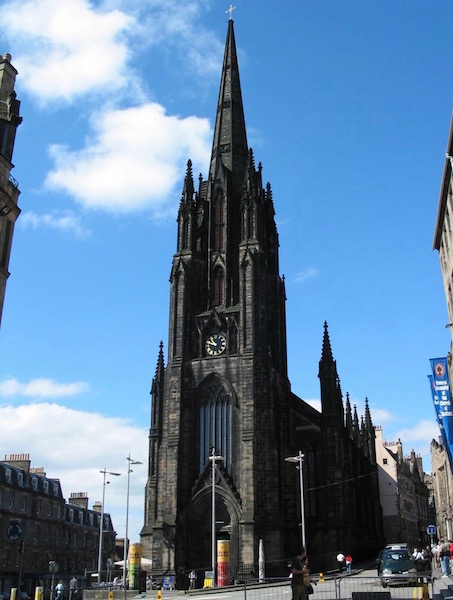
Photo W
Early on, the Royal Mile wasn’t crowded but this changed rapidly as the day warmed (Photo X). Hugh warned us we would be photographed and he was right! Surprising how many other tourists asked us to pose for photos.
Funny moment: one man of our party accidentally dropped his kilt around his ankles but quickly pulled it back up. No harm done as the guys wore pants underneath. No names, either. Hee hee!
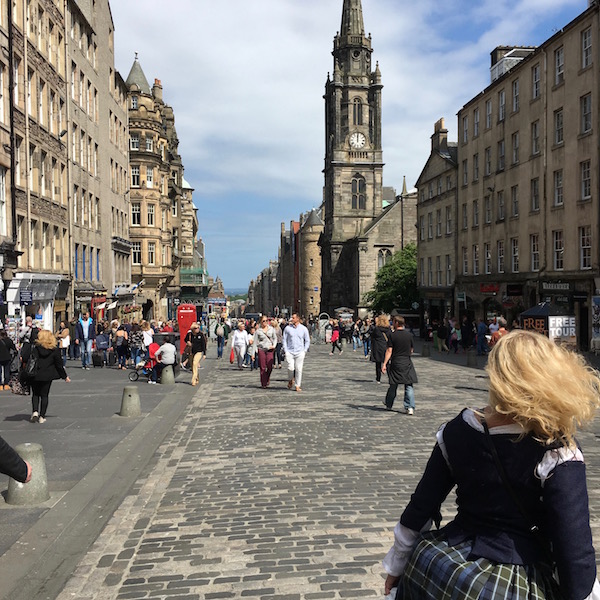
Photo X
The Royal Mile is interrupted by closes and wynds, basically alleyways, that lead to courtyards, living quarters, shops, etc. The famous World’s End Close is a great example (Photo Y).
BOOK QUOTE: Claire comments on these alleyways and the Royal Mile in Dragonfly in Amber.
Passing arm in arm through the gate, my basket gave an apparent excuse for our venturing up the Royal Mile, whether it were to convey purchases home or distribute medicines to the men and their families quartered in the wynds and closes of Edinburgh. Edinburgh sloped upward steeply along its one main street. Holyrood sat in dignity at the foot…
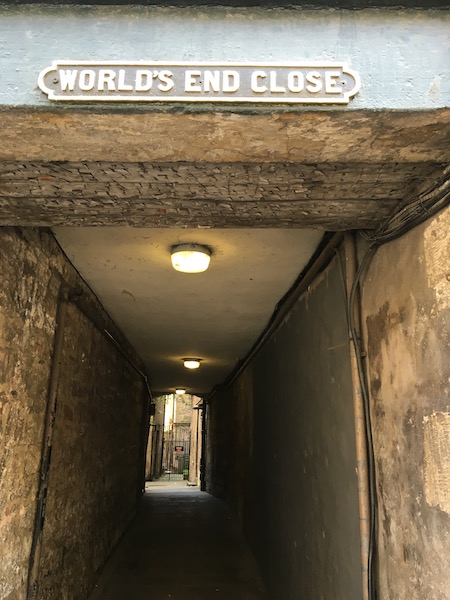
Photo Y
I paused to rub the right great toe of Scottish philosopher, David Hume (Photo Z)! Well, not HIS toe – the statue’s toe. Not a fetish – it supposedly brings good luck to the masseuse or masseur!
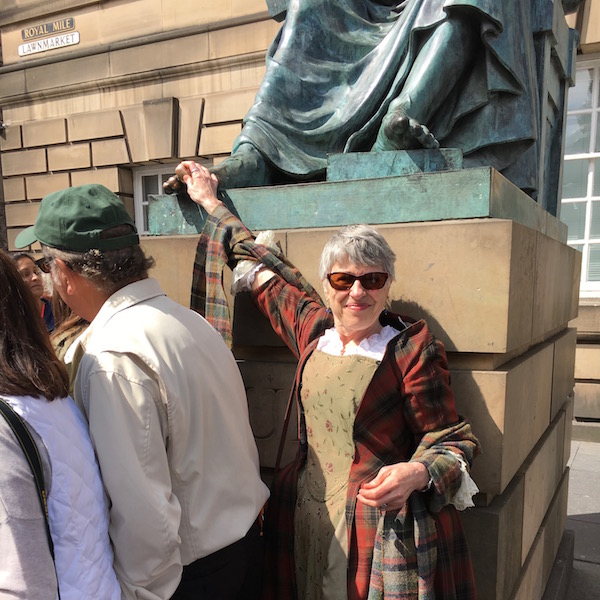
Photo Z
Along the Mile, we met a joyful wedding party (Photo AA). Dressed to the nines in matching Highland regalia, these handsome lads agreed to pose for a photo op (yes, got permission to post).
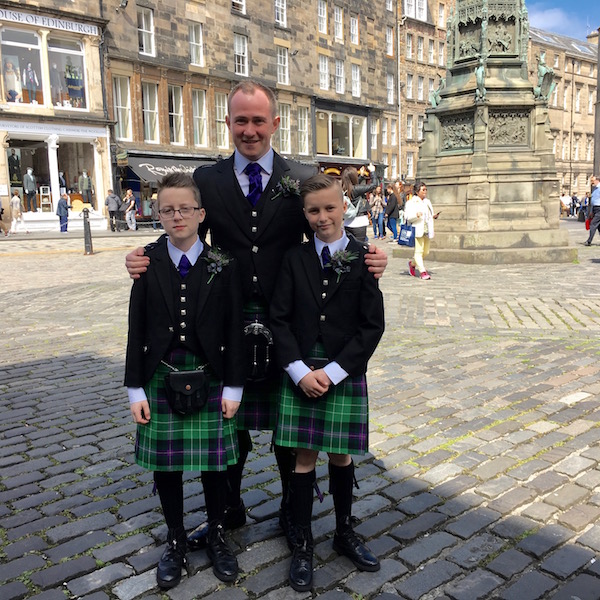
Photo AA
Wonderful shops featuring Scottish and English (and some Chinese) goods crowd the Royal Mile. But, the most fun I encountered was a group of spicy semi-nudists on bicycles (Photo BB). The far lad wore nothing but sandals, glasses and a monkey-faced sporran. Catching our eye, he reached into saddle bags and pulled out a very large banana, offering us a bite. Cheeky-minky!
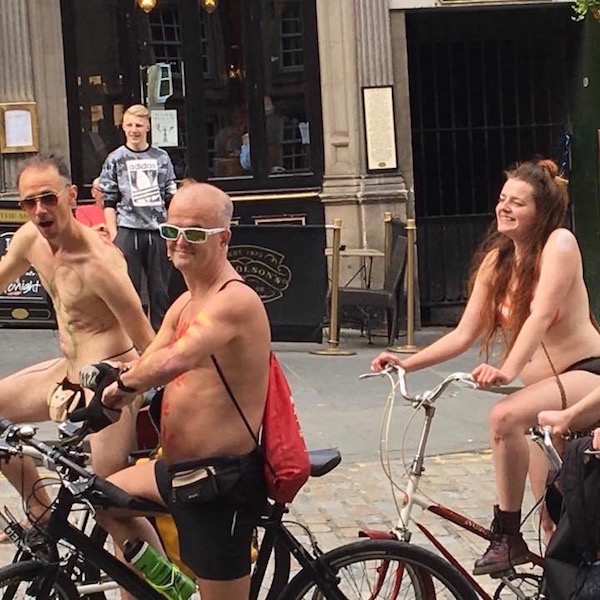
Photo BB (Photo by Johnathan Giacalone)
It reminds me of our own World Naked Bike Ride, a highly popular event held each summer in Portland, OR. Hum…talk about chafing!
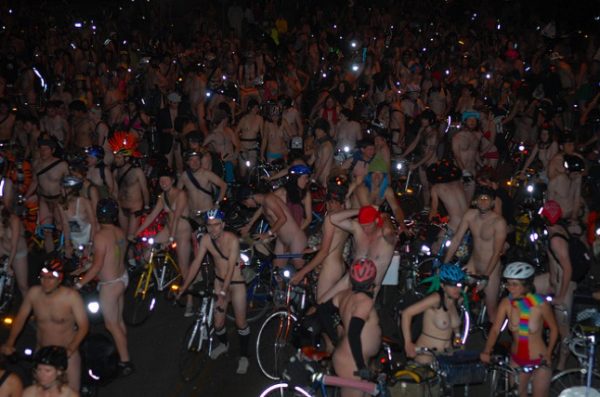
Returning to a few more clothes and a proper composure, imposing and beautiful Holyrood Castle awaits at the base of the Royal Mile (Photo CC), home to Charles Stuart during his occupation of Edinburgh. Visitors are allowed within but we didn’t enter because our tour had come to its end.
BOOK QUOTE: I wondered if the lovely green lawns were the site of Jamie’s daring sword demo at Holyrood (Dragonfly in Amber book)!
“Milord!” called a high voice from the pillars. “Please—le parabola !” Jamie turned, half-frowning at the interruption, but then shrugged, smiled, and stepped back into the center of the courtyard. le parabola was the name Fergus had given this particular trick.
What is le parabola? Ahhhh, you must read the books!
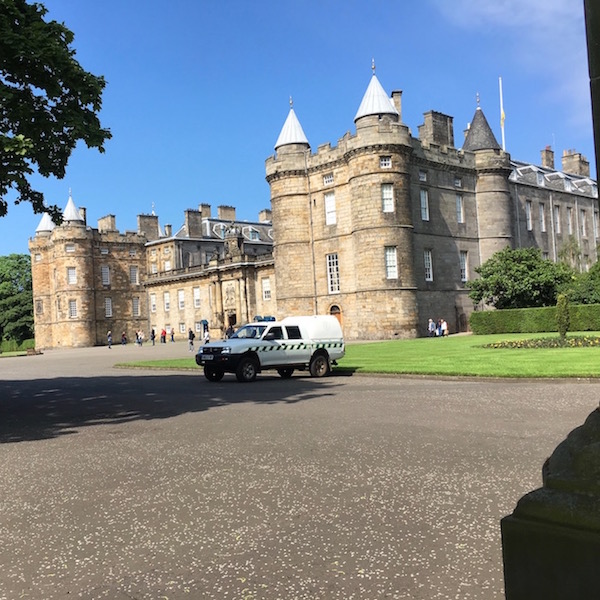
Photo CC
Ever the Scottish gentleman (he treats women vera well), Hugh posed for a final photo on the lawns outside Holyrood Castle (Photo DD). Dig my tennis shoes? Snort!
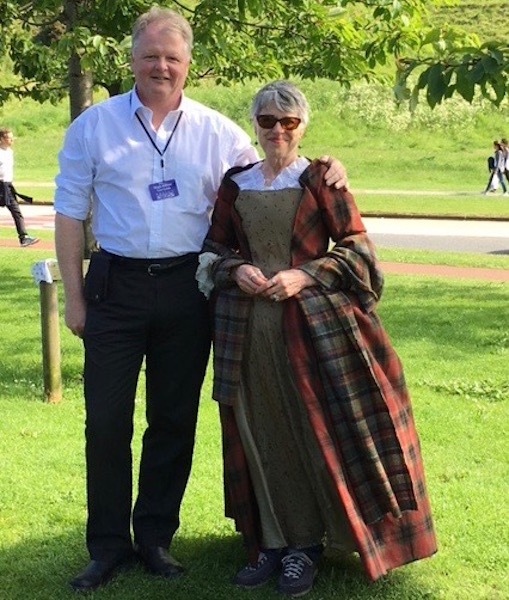
Photo DD
Evening found us at The White Hart Inn, sharing dinner with Hugh (Photo EE). Edinburgh’s oldest pub, it was established in 1516 and purportedly hosted the Bonny Prince, himself.
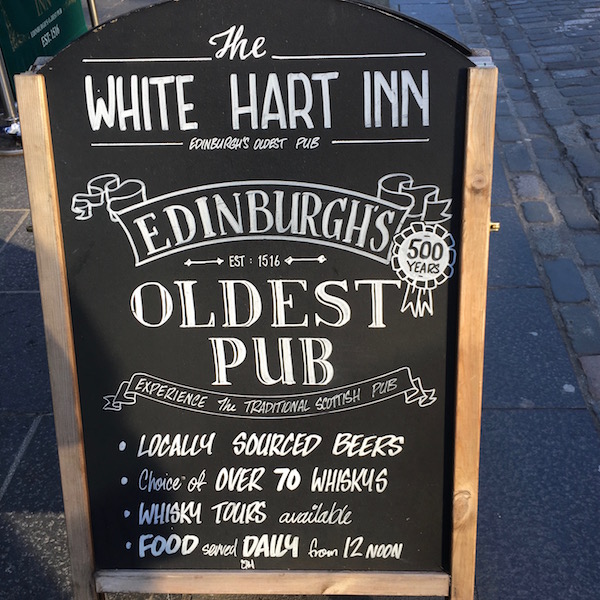
Photo EE
The lovely meal concluded with the best desert of my entire life – I kid you not: warm, sticky toffee pudding smothered in toffee and custard sauces (Photo FF). Divine! It was so good, I forgot to take a photo, so immersed was I in my delight. Below is a comparable example off the Internet (credit below). Drool worthy, yes?
Before my tour, I was warned that all Scotland’s food is deep fried but this culinary threat did not materialize. I didn’t see a single menu featuring deep-fried Mars bars! Scrumptious salads, succulent soups, fresh fish, hearty hummus, splendid sandwiches and pleasant parritch were readily available and absolutely fabulous. International food was also easy to find: Thai, Japanese, French, Italian…and, the very best BLT, ever, at a diner near the University of Glasgow!
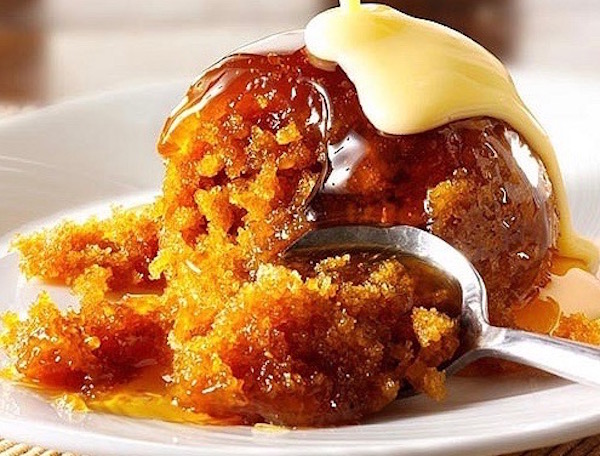
Photo FF
Next morning, we boarded a train back to Glasgow. Sadly, no Flying Scotsman train “flying” this route. Would love to climb aboard that choo-choo train.
Back in Glasgow, we headed for the University area and ran into a St. Andrew’s Day festival. The streets were filled with revelers, performers, face-painters, artistic wares and a pair of voluptuous lasses singing ABBA tunes (Photo GG). A jolly good time!
You are the Dancing Queen, young and sweet, only seventeen
Dancing Queen, feel the beat from the tambourine
You can dance, you can jive, having the time of your life
See that girl, watch that scene, digging the Dancing Queen
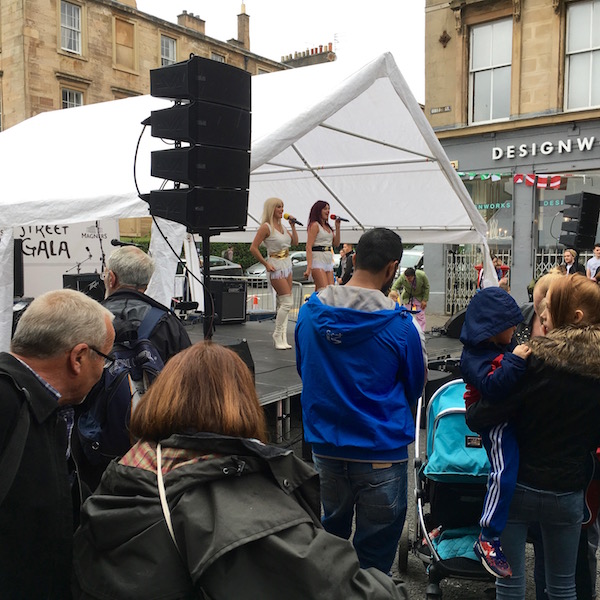
Photo GG
Next day was Monday and I headed back to Every Day Athlete Gym (Photo HH).
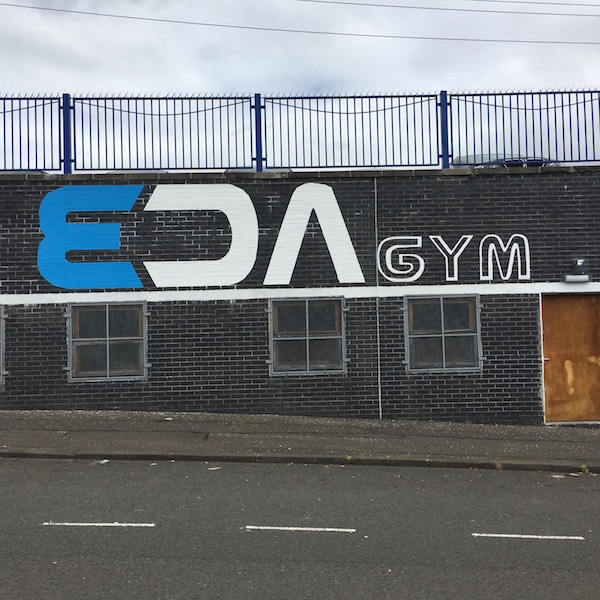
Photo HH
I had a return PT session with Patrick (Photo II)! Remember him (2016 Scotland Tour -Part 1)?

Photo II
This time, it was no more Mr. Nice Guy. Patrick had my number and worked my arse off! He added rounds of rowing, cross country skiing, planks, pushups, various squats, lunges and, ugh, the Prowler! And, this time, he recorded my efforts (Photo JJ). Puff, puff! I am happy to say that my times did drop with every round. Just joshing about the “no more Mr. Nice Guy.” Patrick is fantastic!
I asked Patrick to comment on the Gym’s philosophy. He explained that they support and promote a community of folks who enjoy physical exercise coupled with healthy living. The gym plans to open its own kitchen with balanced meals prepared on site. Very impressive!
I was also impressed with the facility and the friendliness of everyone there. They even allow well-behaved dogs to join their owners at the gym. Patrick’s own puppy gave me face kisses. Very well-behaved dogs. People, too!
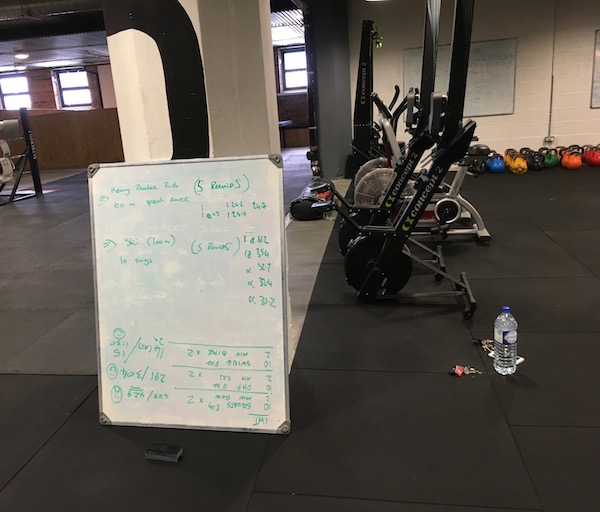
Photo JJ
Next day it was time to head home. Farewell Hugh, with your valiant van, infinite info and stirring stories (Photo KK)!
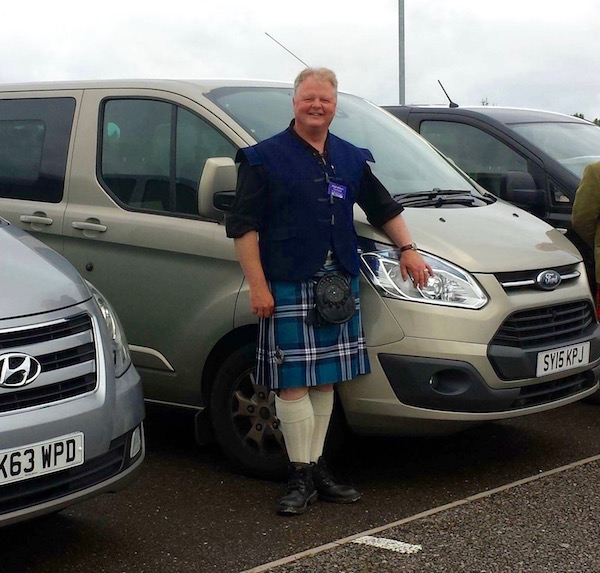
Photo KK
Farewell Scotland (Photo LL) for now! I can’t wait to return next year!
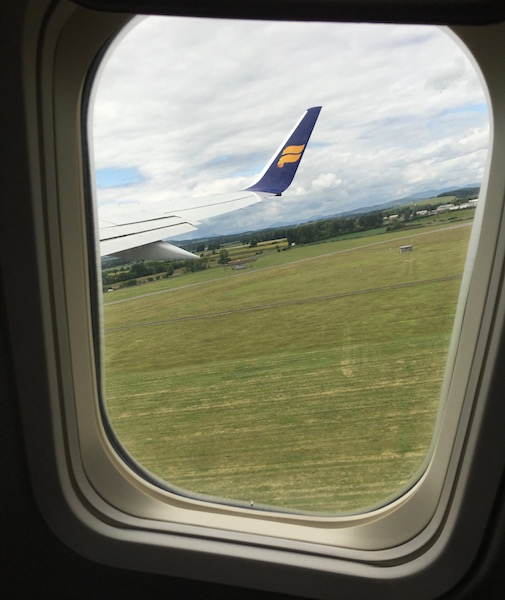
Photo LL
Thus ends my four-part Scotland odyssey during which I took almost 500 photos. I had a splendid time and loved every moment. Scotland and it’s people are a delight and wonder to experience. I highly recommend a visit to all!
A deeply grateful
Outlander Anatomist
Photo creds: Starz, Johnathan Giacalone (Photo N), Outlander anatomy, www.cakesgloriouscupcakes.com (Photo FF), www.en.wikipedia.org (Photo R), www.historicenvironment.scot (Photo U), www.panorameo.com (Photo W), www.tripadvisor.com (Photo T), www.undiscoveredscotland.co.uk (Photo J)

